~Ad Majorem Dei Gloriam~
For my ART322 Mixed Media course's final project, I created laser engraved records once again. This time, I recorded the music based on a beloved song from my childhood. Read on for the tale of how they were made.
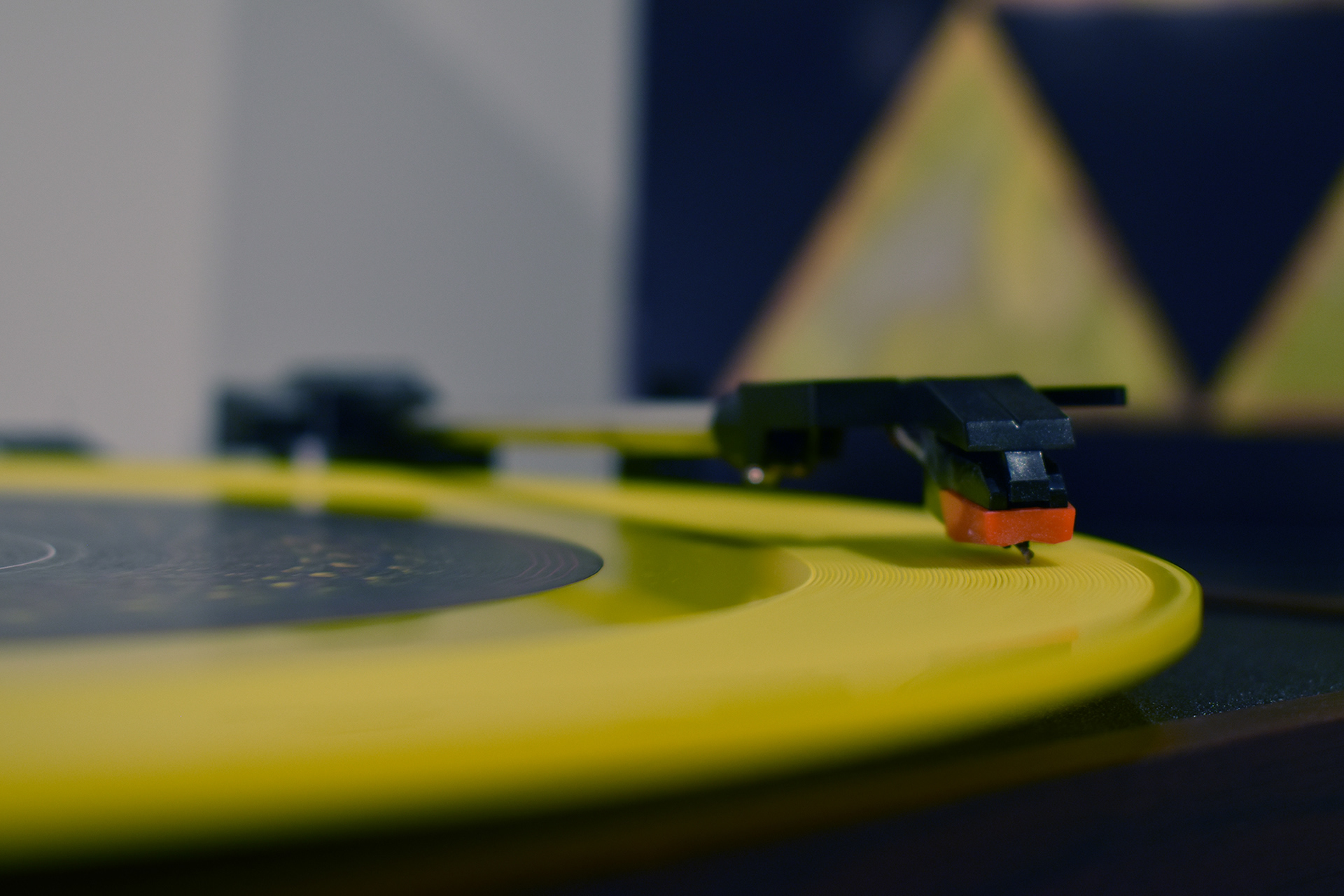

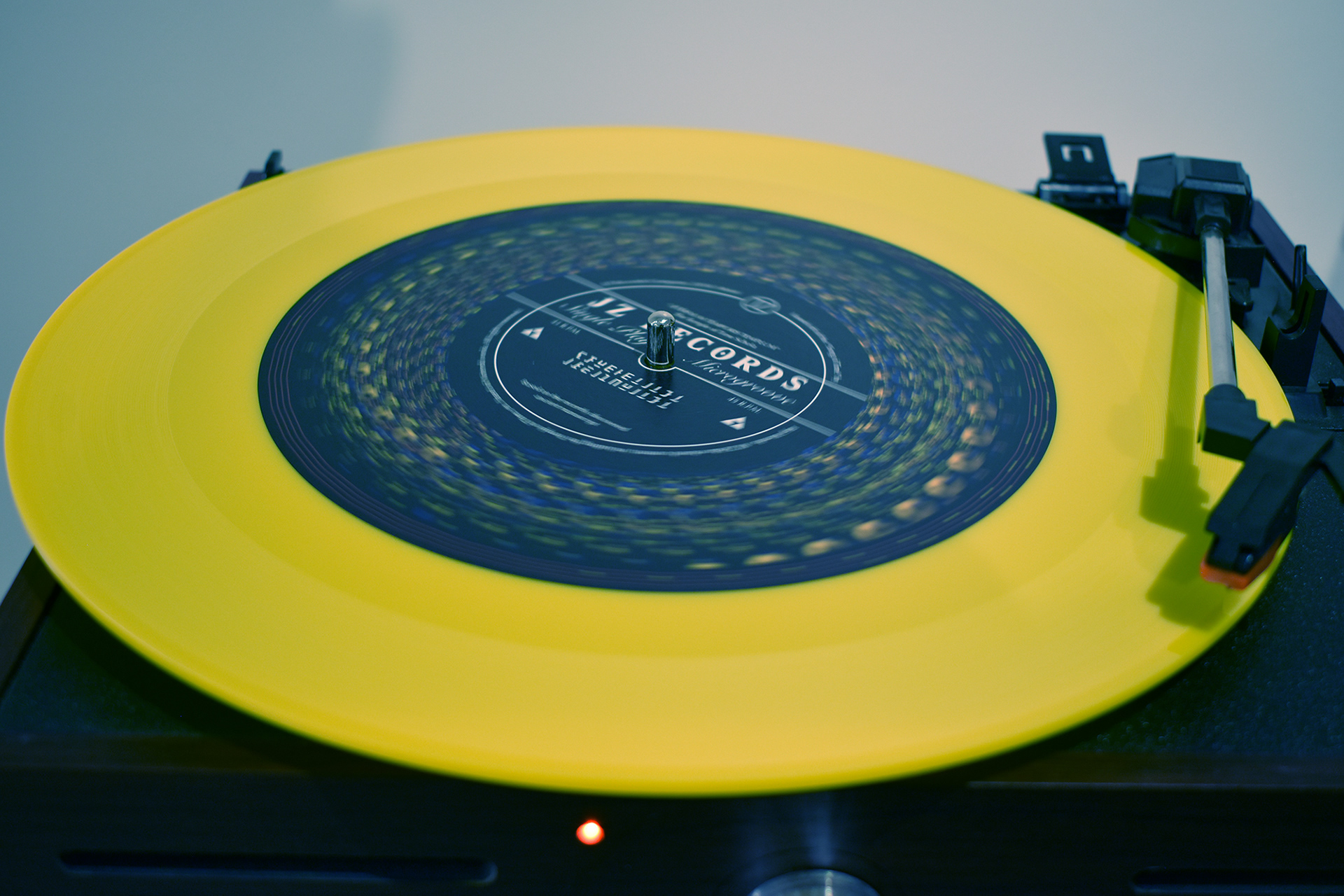
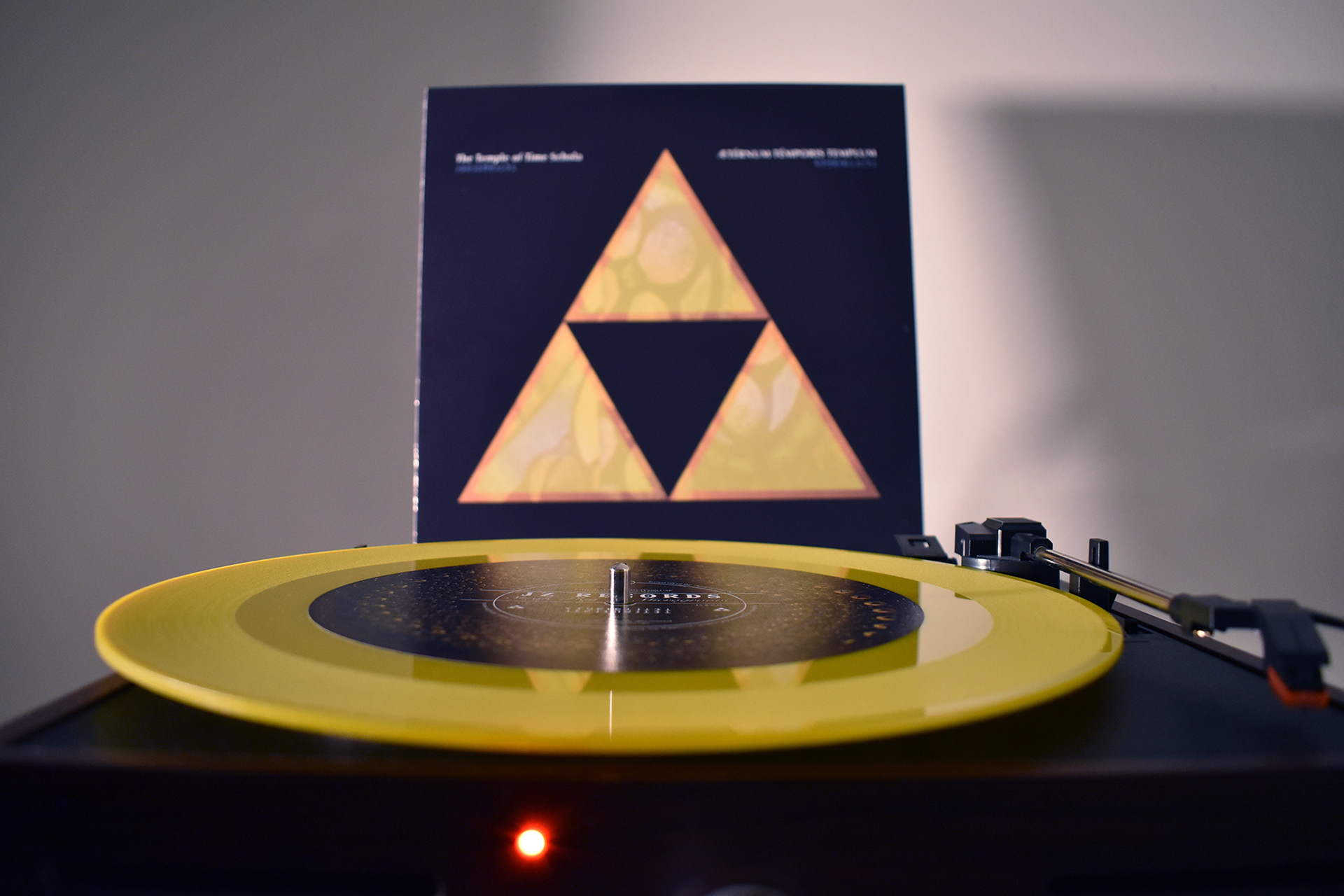
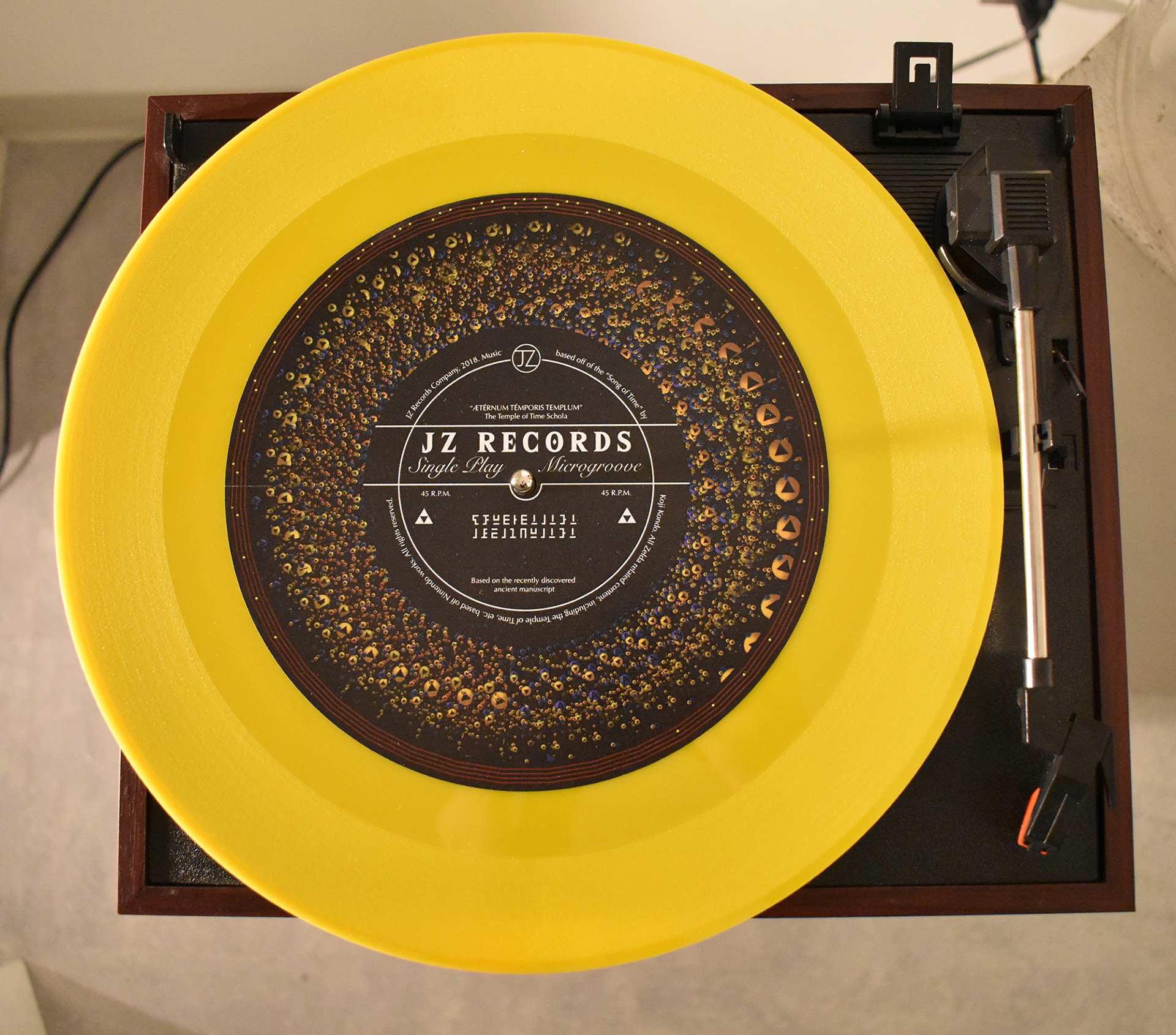

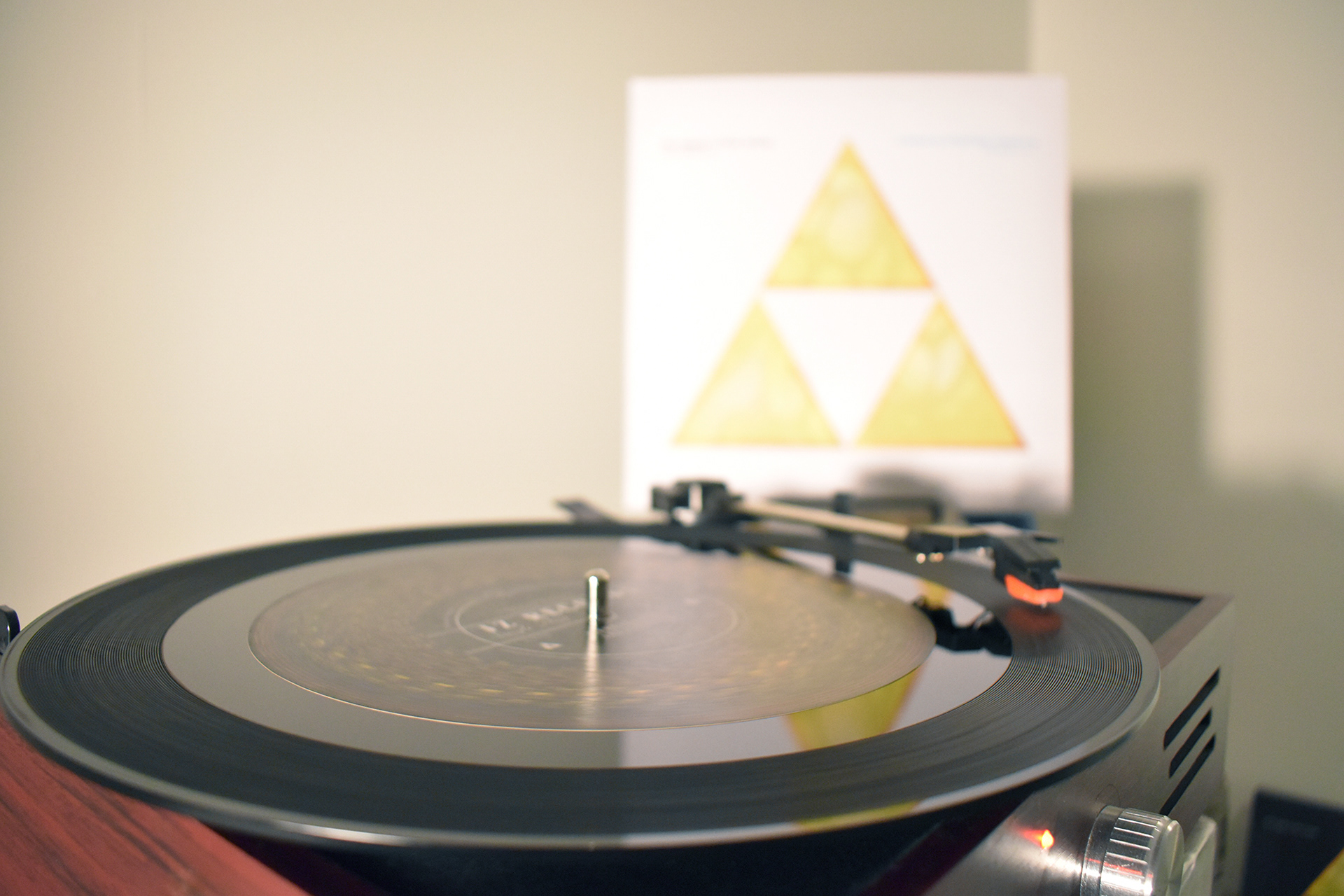
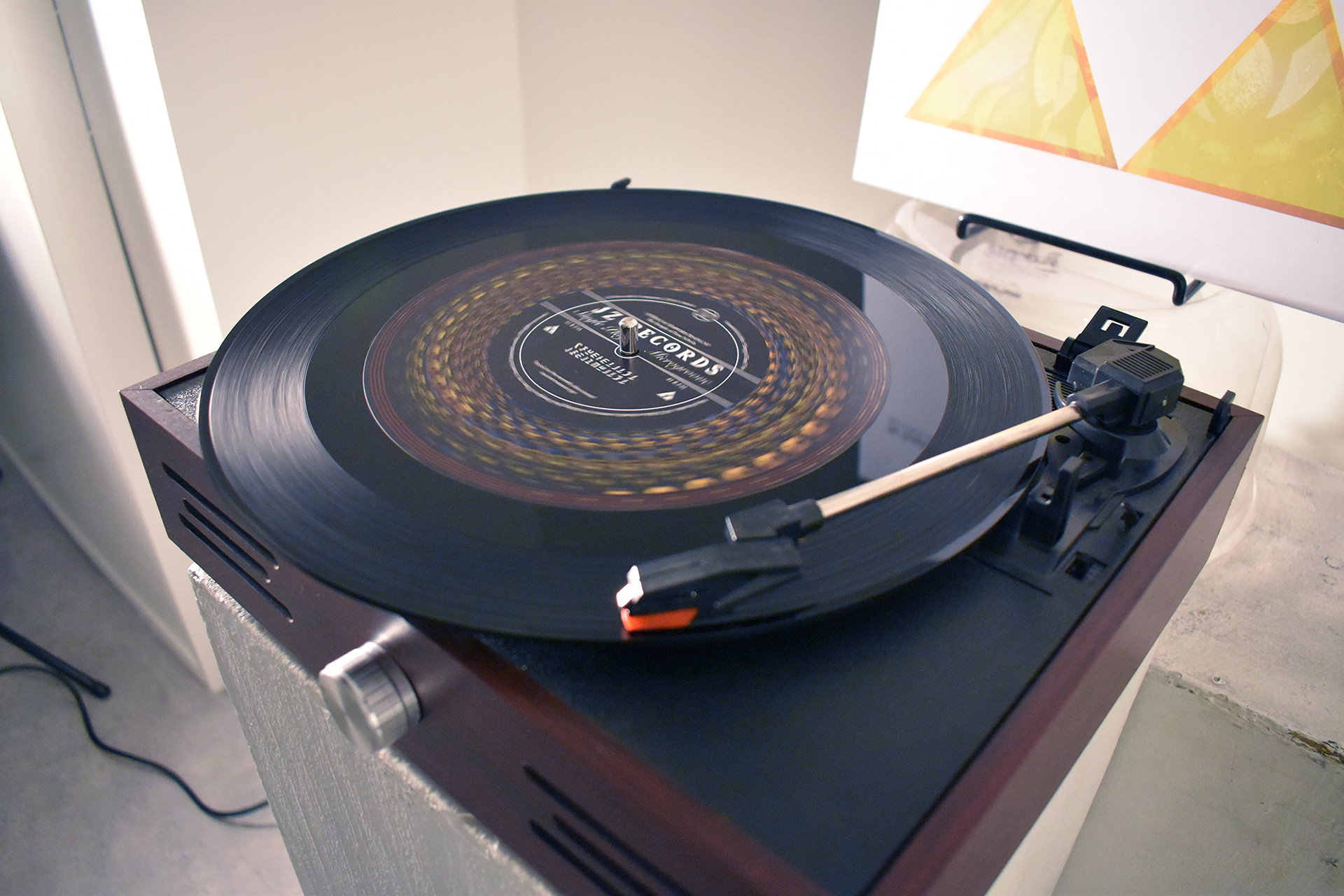
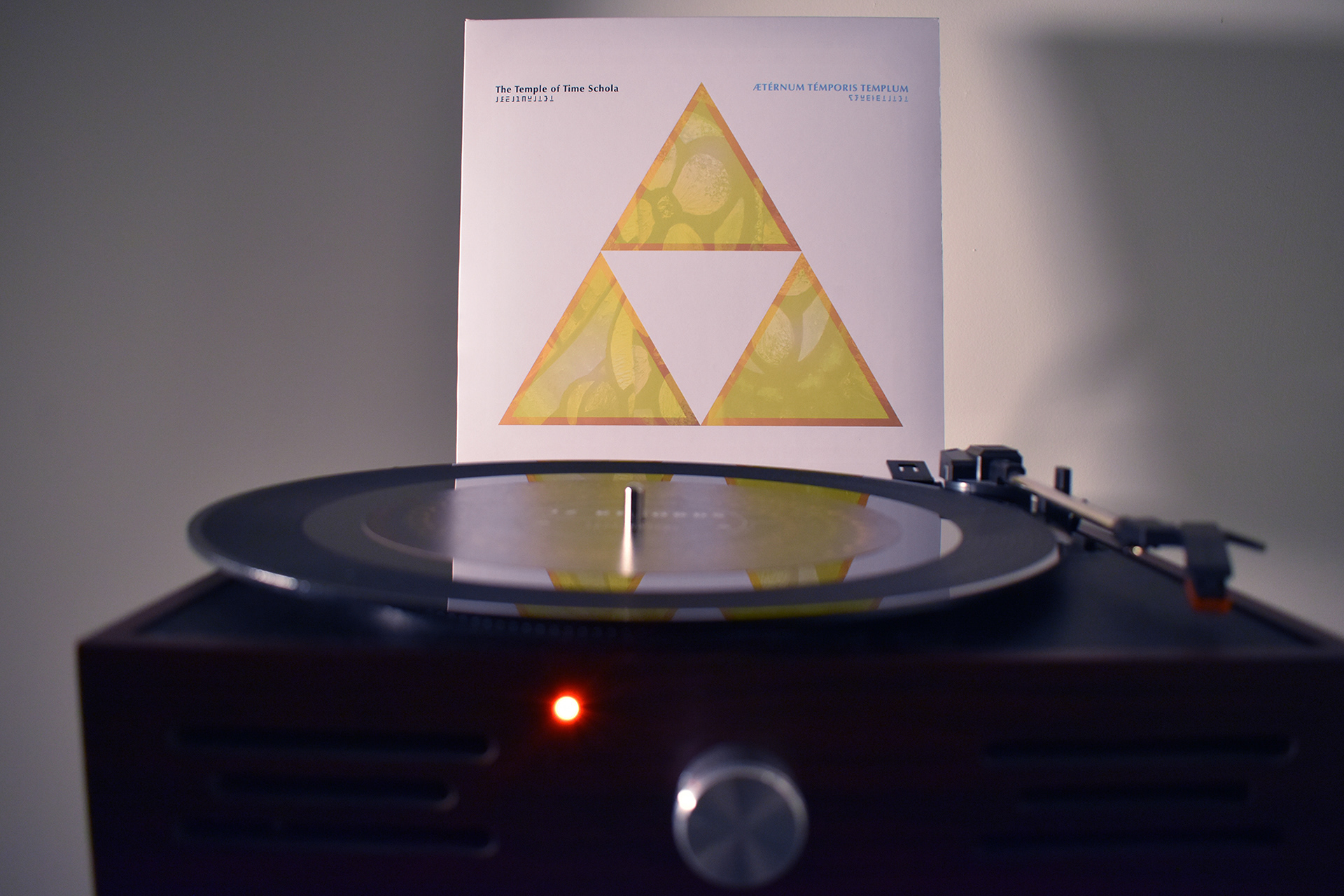
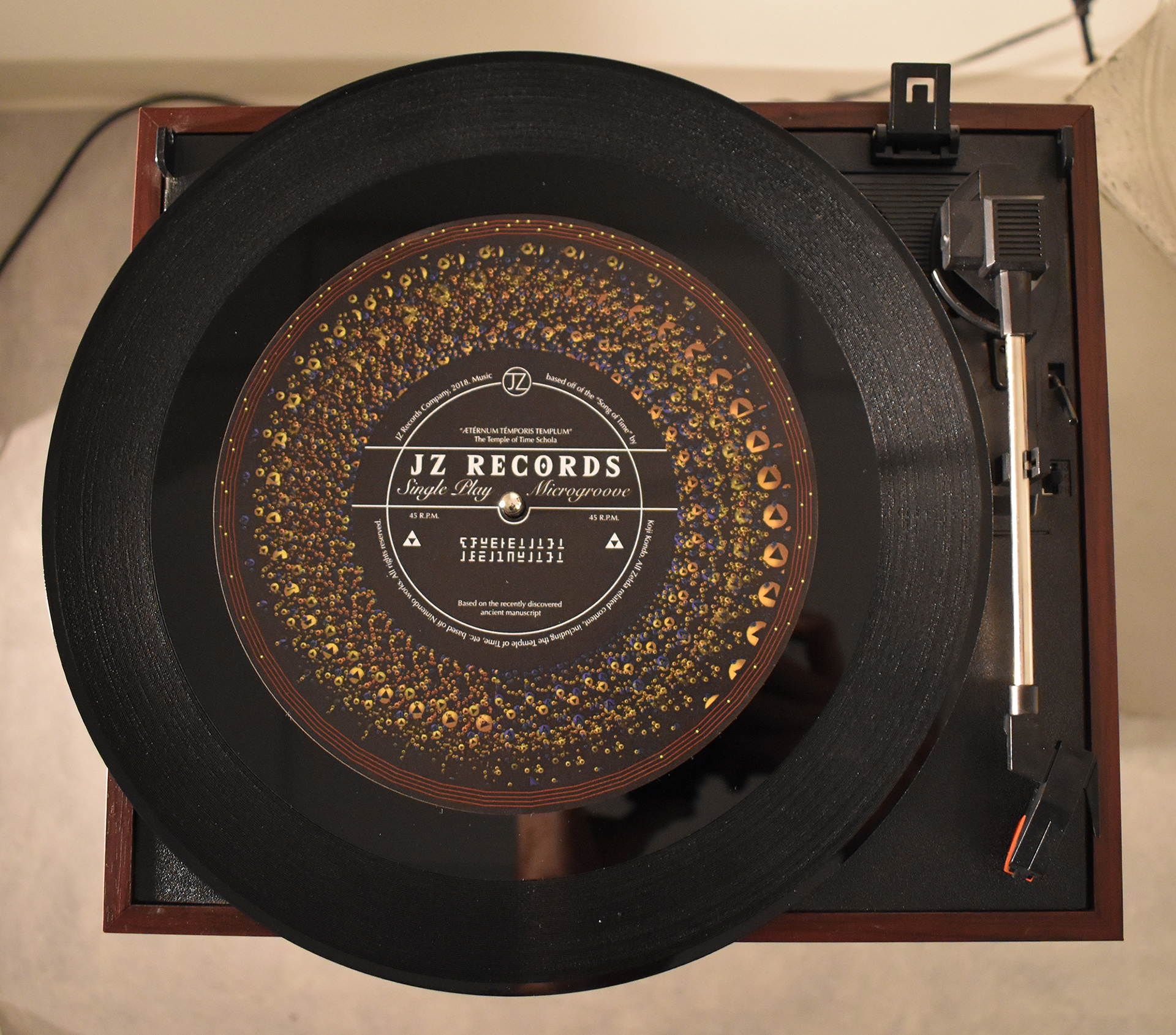
Introduction
When I was a young lad, I loved a particular videogame known as The Legend of Zelda: Ocarina of Time. This fantasy game captured my adolescent imagination like none other, taking me on a fairy-story adventure like that of Frodo from The Lord of the Rings. I was particularly moved by the soundtrack; and more specifically, the beautiful Song of Time that was chanted in the game's Temple of Time. I have a particular memory of just pausing the game to listen to the chants echo throughout its ancient halls, telling a story interweaved into the annals of history.
Something about this sound translated me to another plane, and I think, deep down in my soul, made me thirst for a true experience of the heavens. In short, the music was unlike anything else I had heard before in real life.
See the video below to hear the music that struck me so much.
Discovering Chant
In my young adult years, I found this music existed in real life; indeed, it had been a part of my own Catholic tradition for centuries. That music was Gregorian Chant. Stumbling into my first Traditional Latin Mass, my world was rocked as I heard the music of The Legend of Zelda's Temple of Time unfold and blossom into reality; ancient music sung by a true choir, singing real lyrics, offering praise to the True God, telling the tale of, as J.R.R. Tolkien would put it, the "greatest fairy-story" (for it is the one True fairy-story). At that mass, God had given me the heavenly experience that I longed for.
A few years down the road, I made the connection between the Temple of Time's music that had impacted me so much as a teenager, and the Gregorian Chant that was actively impacting me in my walk with Christ. It occurred to me that the creators of The Legend of Zelda where clearly heavily inspired by Gregorian Chant when they composed the "Song of Time". I was led to the conclusion that it was time to make the "Song of Time" more fully into what it was already; it was time to turn it into a real Gregorian Chant.
Writing the Lyrics
I hit the books writing lyrics for it. I composed English lyrics, and sent them to a Latin instructor, my friend Mike Katelenich. He set to work making the song comprehensible to your average medieval Catholic monk.
The lyrics Mike Katelenich and I came up with.
With the "Song of Time" now having authentic Latin lyrics written for it, I from this point forward dubbed it Aetérnum Témporis Templum (English: "The Eternal Temple of Time"), in the tradition of naming a Gregorian Chant after the first two or three words of the text.
The chant written in Latin and ye-olde square-note notation.
Painting the Manuscript
Next, I consulted my inner-medieval monk for a day's time, and created a manuscript for the newly-composed chant. The lyrics and the notes were composed on a computer and printed off. In a classic arts-and-crafts move, I made the sheet look ancient by soaking it in McDonalds McCafe coffee and throwing it in the oven. With my trusty acrylic paint set, I forged the Triforce "A" drop cap and the other decorations, using paint colors that would be found in real medieval manuscripts.
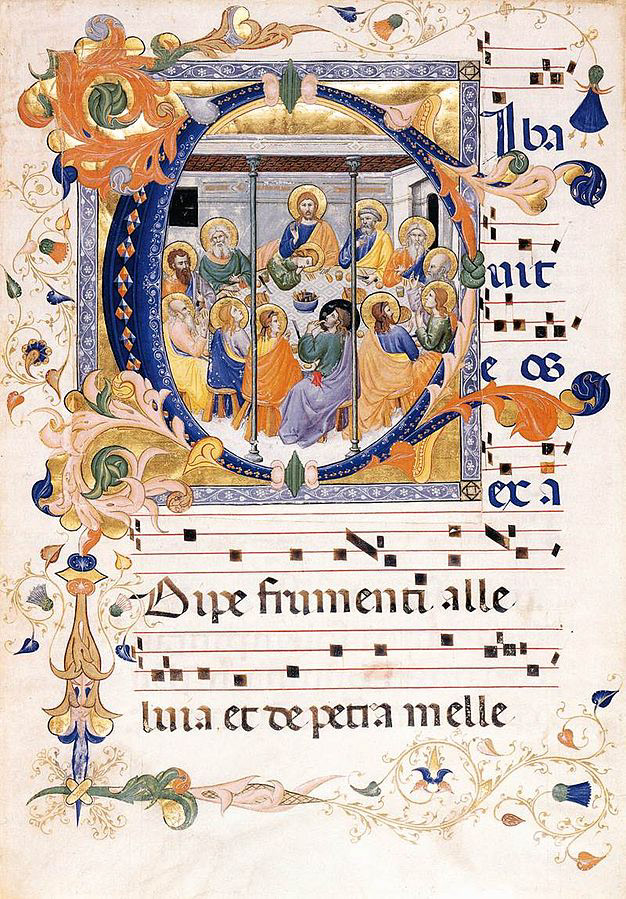
Some of the inspiration I took. Medieval manuscripts are exceedingly beautiful, and large, as usually the monastery could only afford one book that the entire choir of monks would have shared.
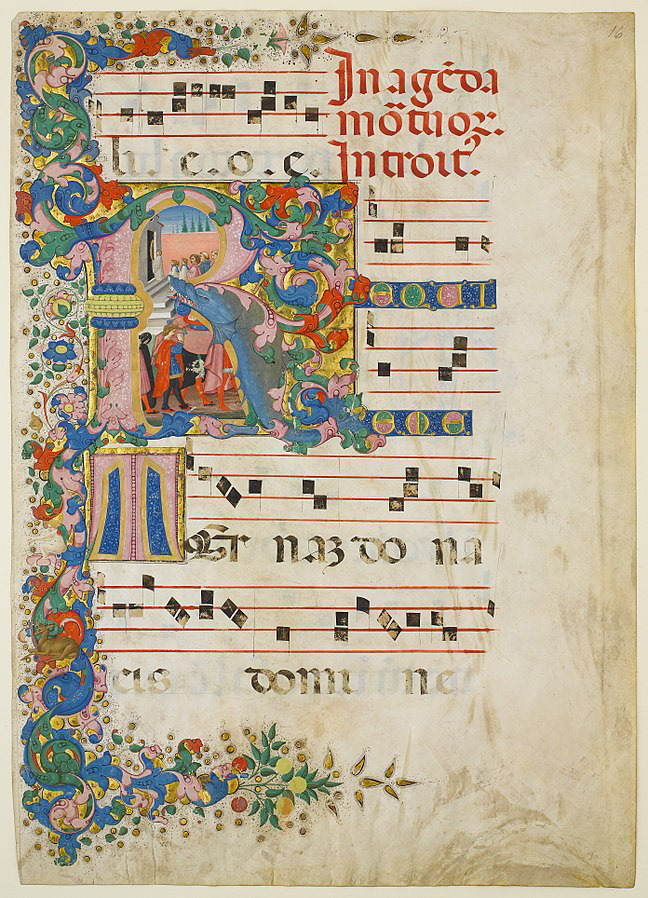
Some of the inspiration I took. Medieval manuscripts are exceedingly beautiful, and large, as usually the monastery could only afford one book that the entire choir of monks would have shared.
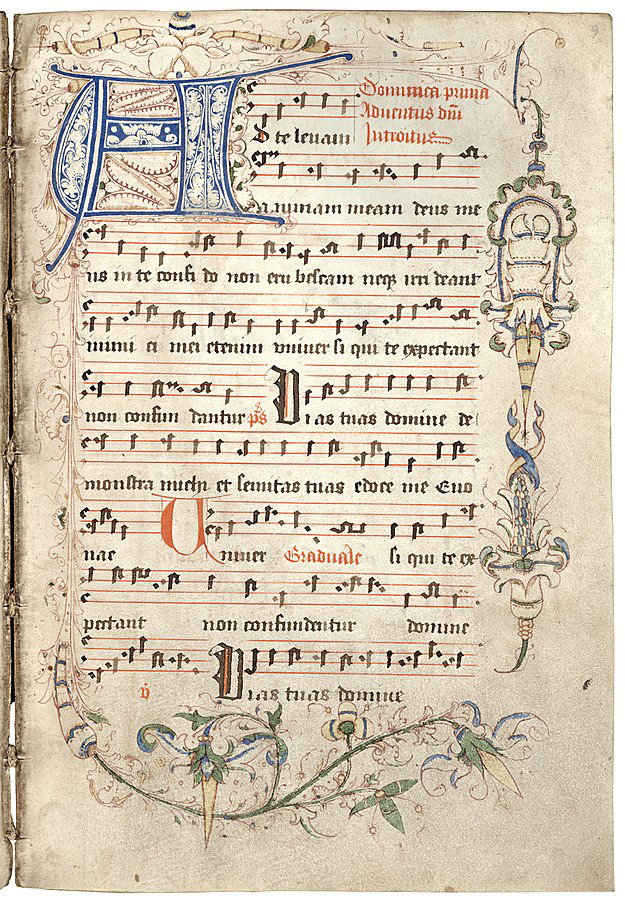
Some of the inspiration I took. Medieval manuscripts are exceedingly beautiful, and large, as usually the monastery could only afford one book that the entire choir of monks would have shared.

Some of the inspiration I took. Medieval manuscripts are exceedingly beautiful, and large, as usually the monastery could only afford one book that the entire choir of monks would have shared.
Some of the inspiration I took while creating the manuscript. Medieval manuscripts are exceedingly beautiful, and large, as usually the monastery could only afford one book that the entire choir of monks would have shared.
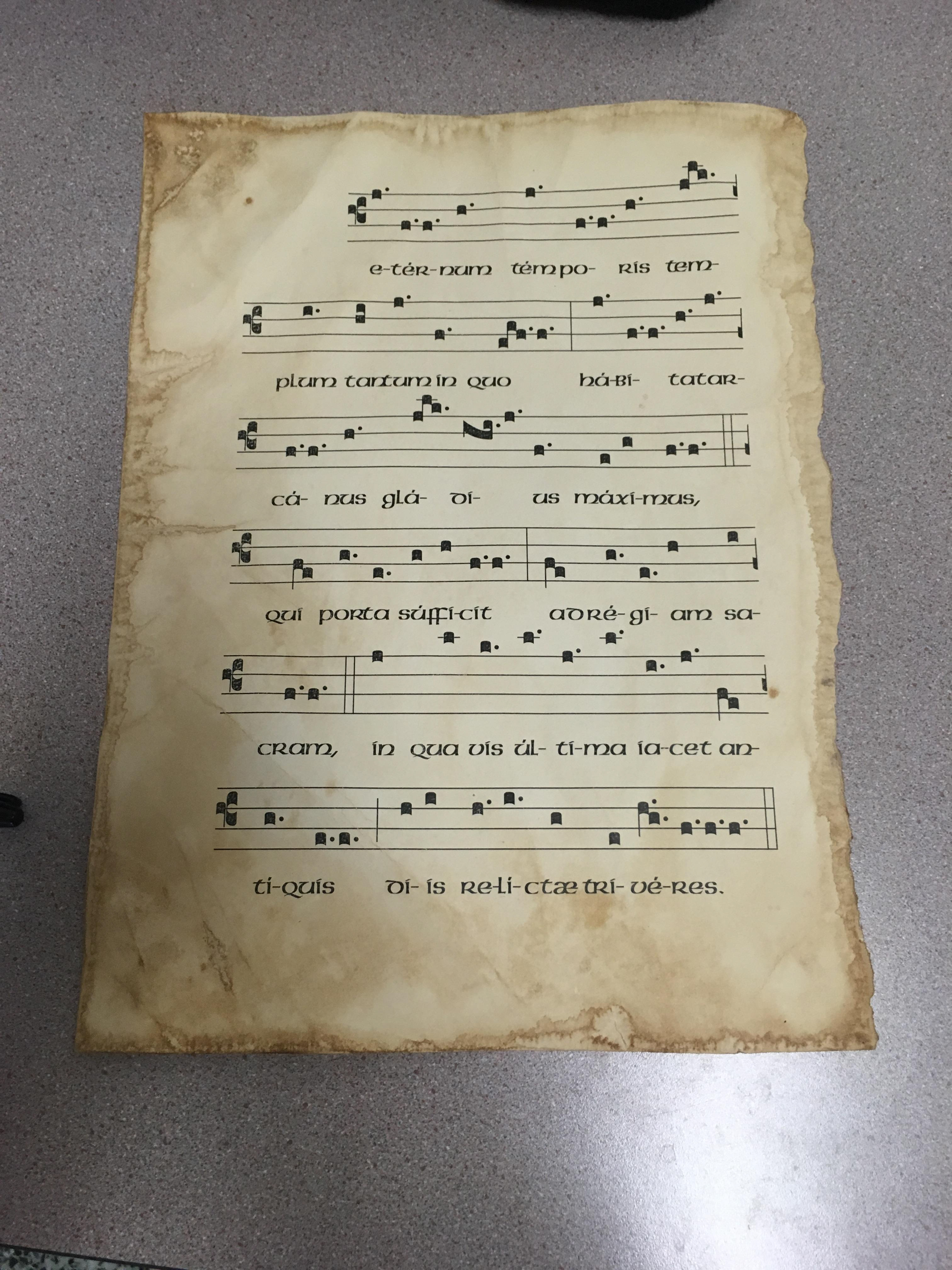
The manuscript upon being soaked in coffee and throw it in the oven to give it an ancient quality.
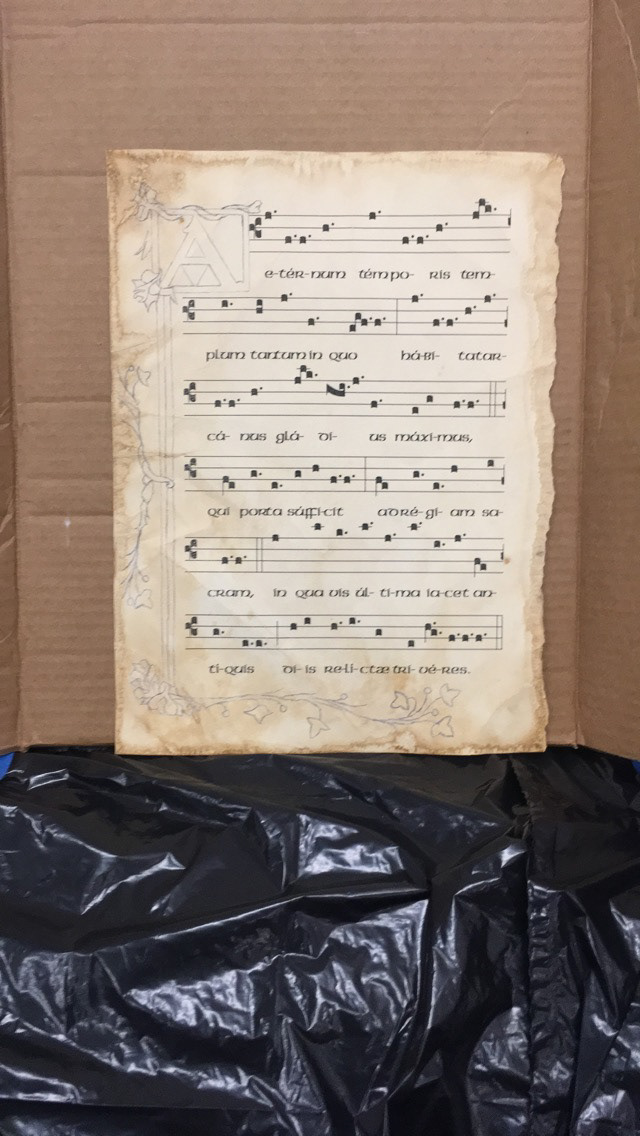
The design sketched out.
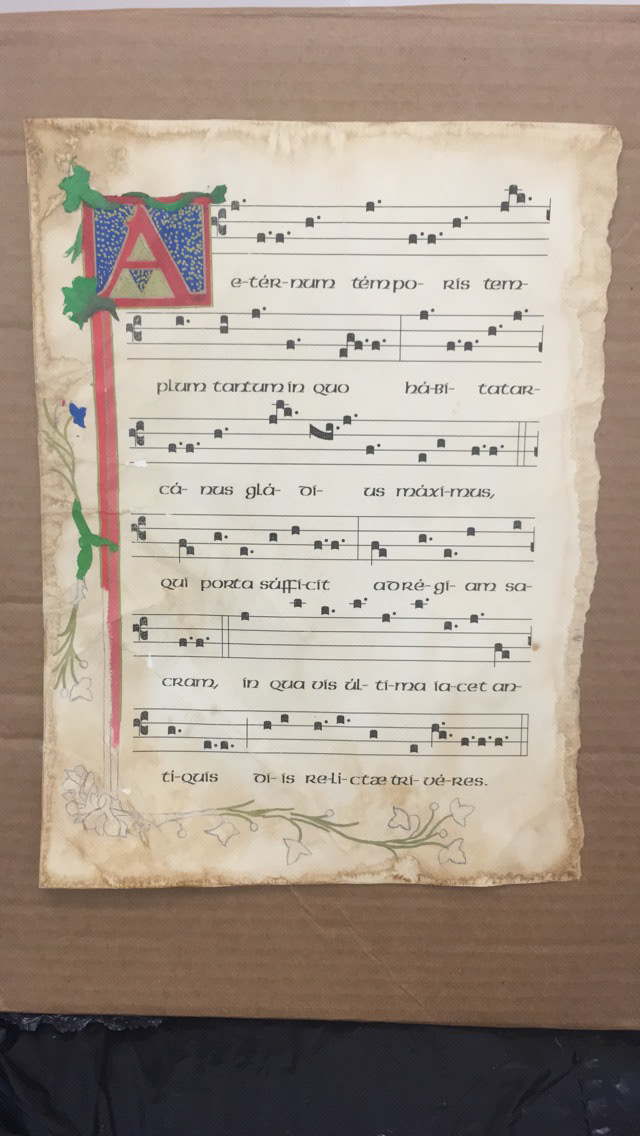
The design filled in with acrylic paint.
The work of the manuscript in progress.
The finished product, ready to be chanted. The font used is actually straight from the Zelda games.
Recording the Track
Of course, a chant manuscript is pointless without a choir to bring it to life. As it would happen, my friend Dylan Reinhardt had just set up a recording studio in his apartment, so we set to work recording right away.
I intoned the poetry from 8 different places around the microphone. When each recording was finished, we mixed each track together and added reverberation effects to make it sound as if the "choir" was in a glorious European cathedral of old, and the song was complete. You can hear the results below.
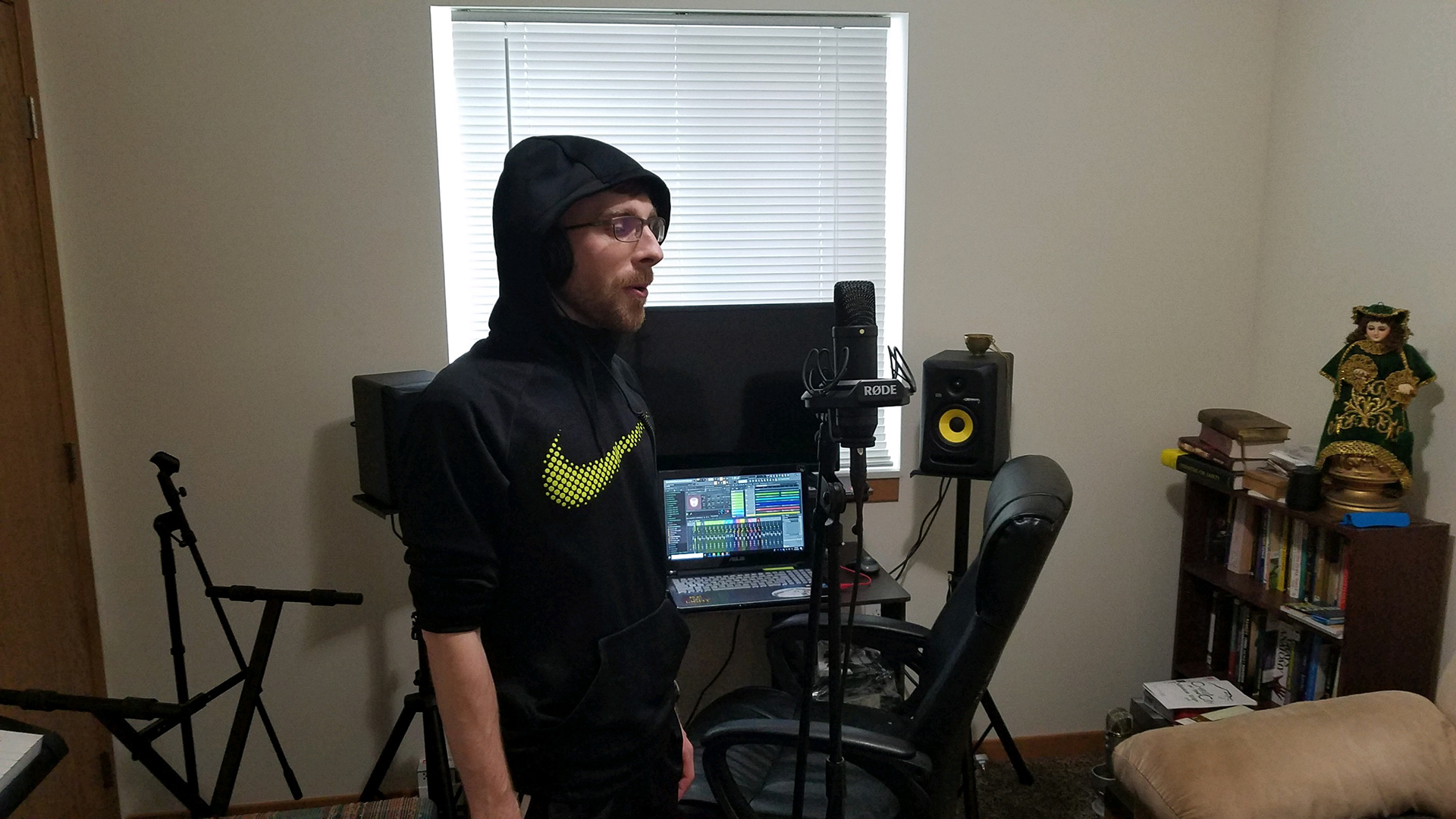
Singing away!
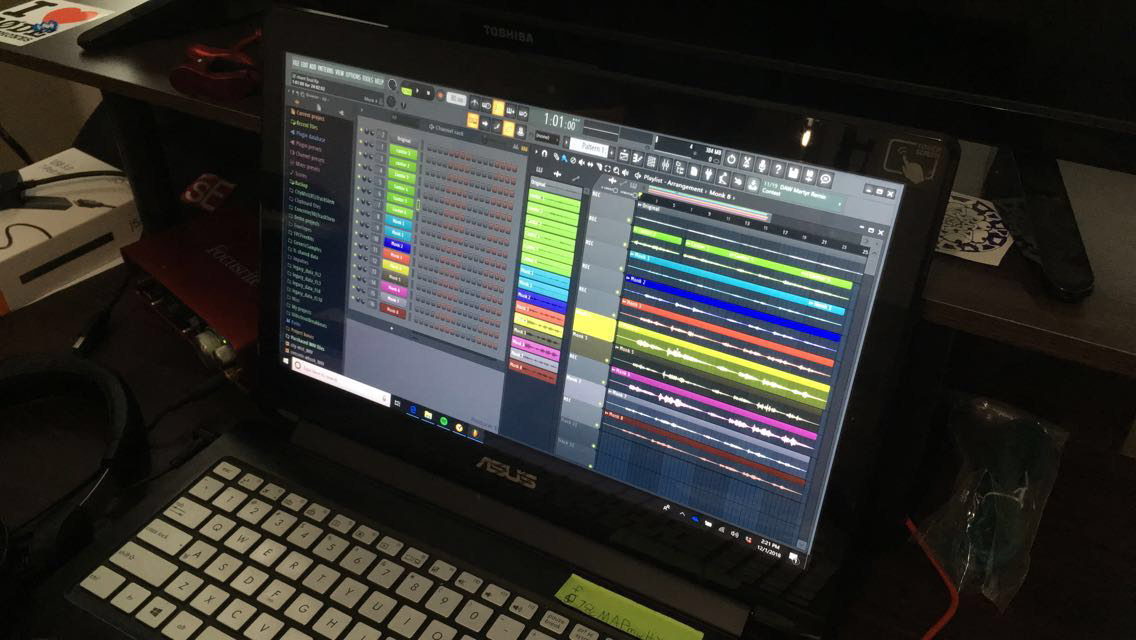
The mixing studio.
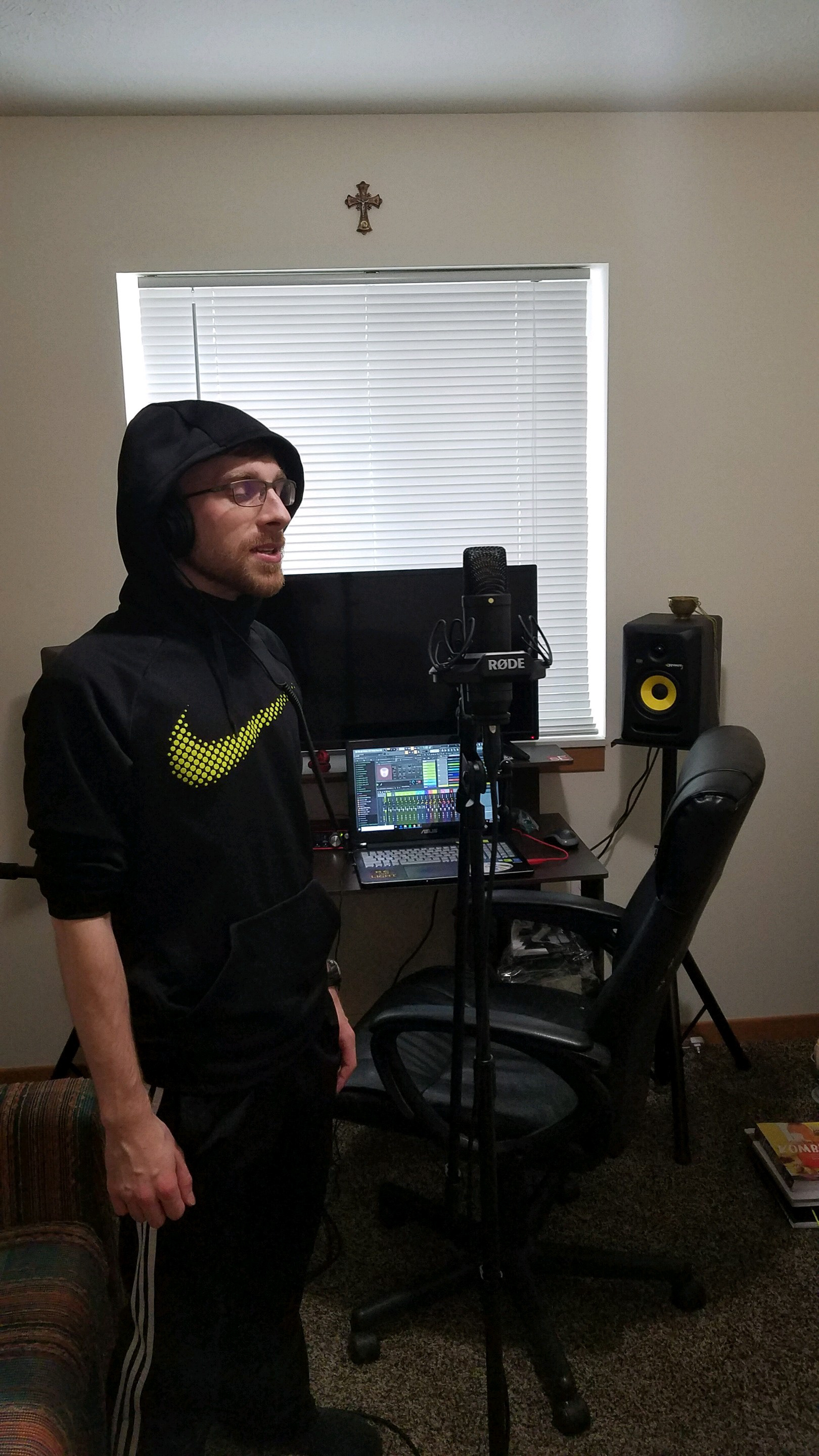
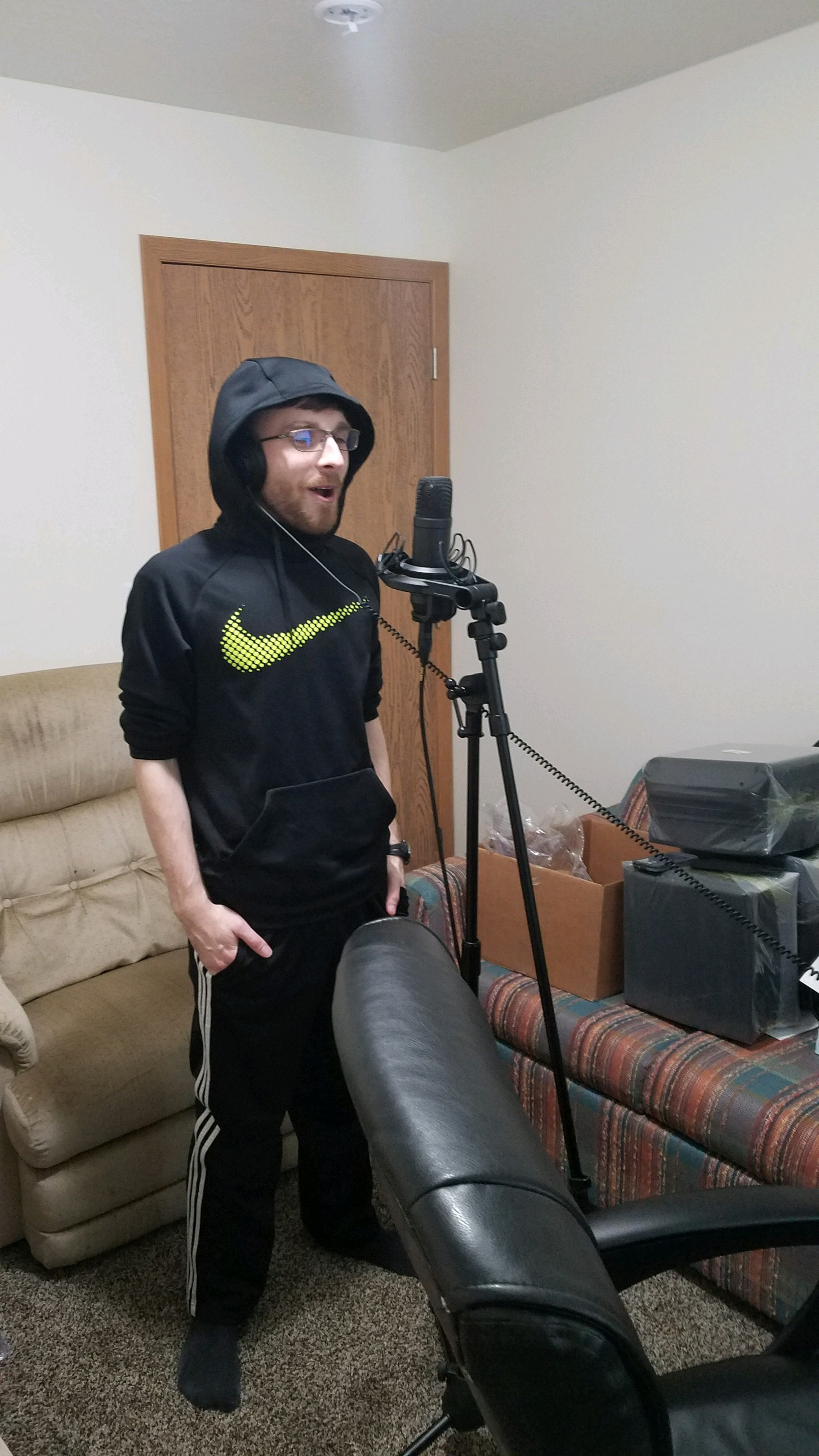
Some footage of the recording session.
The final product. Written in square note, with a unique, Zelda-esque spin on the color-scheme.
Engraving the Records
One of my primary goals as an artist is to assimilate the wisdom of the past into the modern era. For, if the ultimate Beauty, God, is, as Saint Augustine put it, "Beauty ever ancient, ever new", then the created beauties of yesteryear must also always contain a freshness to them, and do not suddenly become outdated with the passing of time. Chant is very old, but its antiquity does not make it ugly; on the contrary, it has stood the test of time, and is waiting to be assimilated into modern culture.
Therefore, it was time to bring this fictional chant I had fabricated into our times. Just like I had done before, it was time to turn it into a laser-engraved record. That's right, low-quality records can be created with any standard laser engraver. I would once again be using plexiglass as my medium, as real vinyl is toxic when burnt by a laser.
With the help of Audacity, a sound-editing program, as well as some coding, I created a vector file of the grooves to be cut by the laser into the plexiglass surface. You can see the final vector file below.
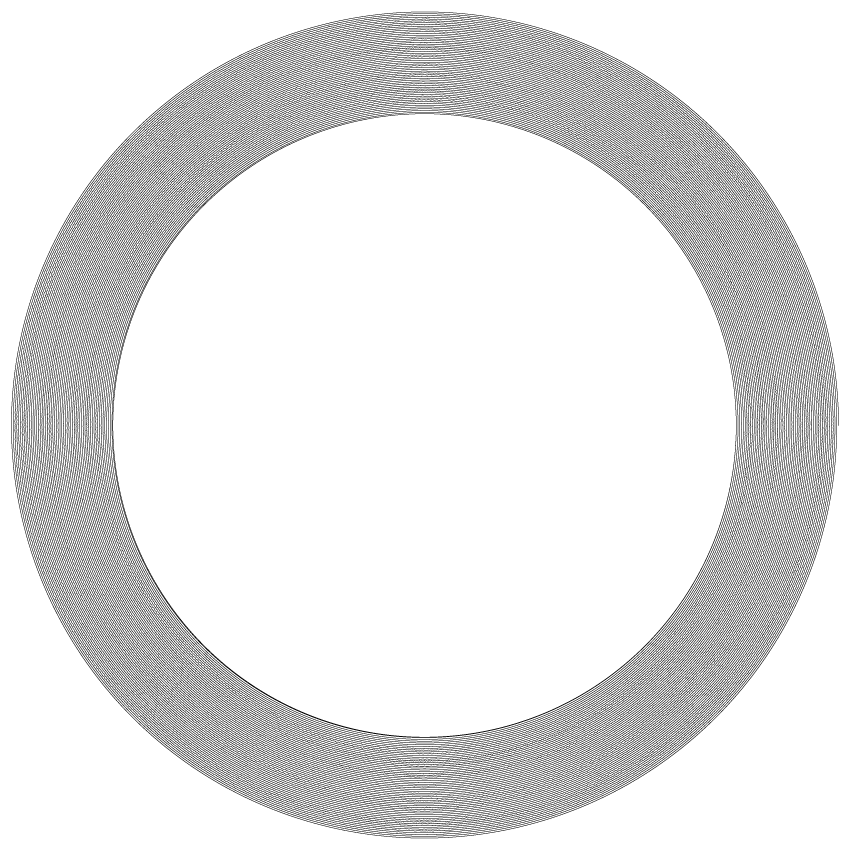
The vector file containing the sound-data ready to be engraved into history. You can almost hear the echos running throughout the the Temple of Time just by looking at it!
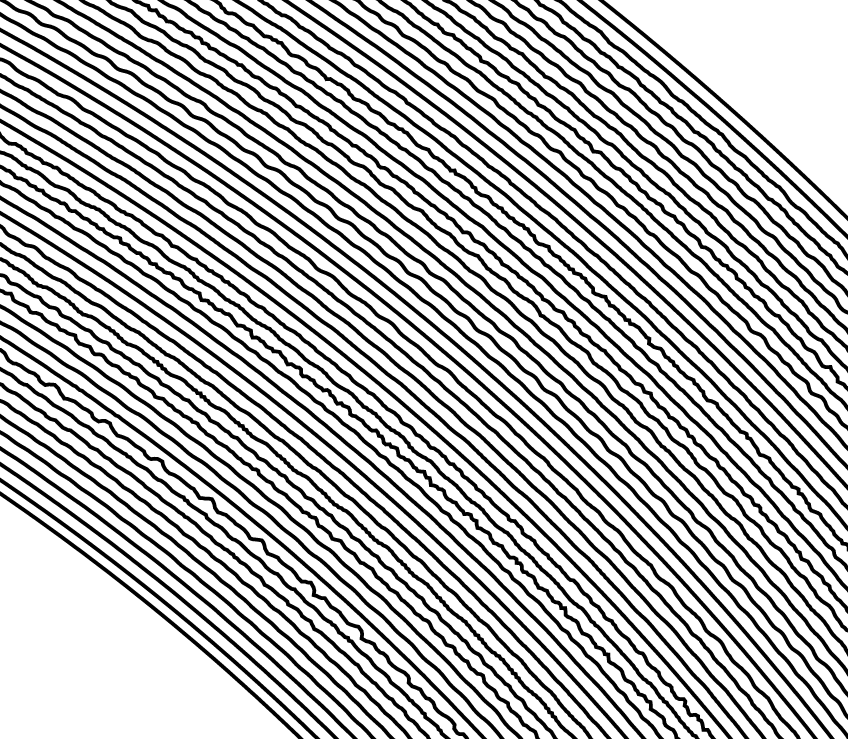
The vector file containing the sound-data ready to be engraved into history. You can almost hear the echos running throughout the the Temple of Time just by looking at it!
The vector file containing the sound-data ready to be engraved into history. You can almost hear the echos running throughout the the Temple of Time just by looking at it!
Next, it was time to put the plexiglass in the laser engraver, load the vector into it's memory, and fire away! Below, you can see the Epilog laser engraver producing two of the three records I made.
The laser-engraver doing what it does best: making records.
This was a rather slow process, but was well worth the wait!
Creating the Record Label
With the records all laser-cut and ready for playing, it was time to turn them into phenakistoscopes-one of the earliest forms of moving media entertainment, pre-dating the television, the Gameboy, and even the fidget spinner! It is played on a spinning surface and viewed under a strobe light or a camera, which creates a moving optical illusion. Think of a flip book, but on a turntable!
Since a phenakistoscope is played on a turntable, and because I was making a record, which is also played on a turntable, I determined that it would make the perfect art for the record label. With the help of Adobe After Effects and Photoshop, I created an Zelda-inspired animation and arranged it in a circle around the record label. I printed it on adhesive sticker paper for applying to the records.
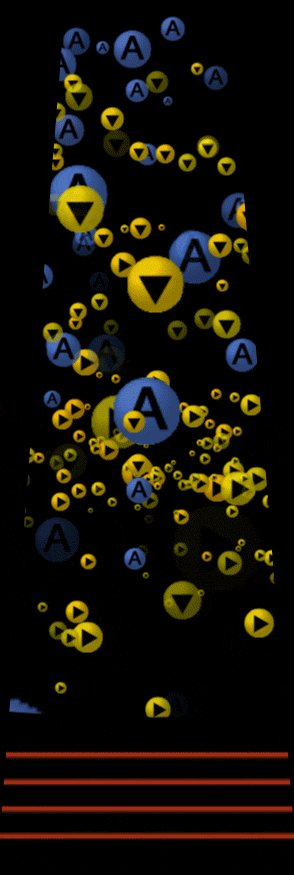
The animation for the label.
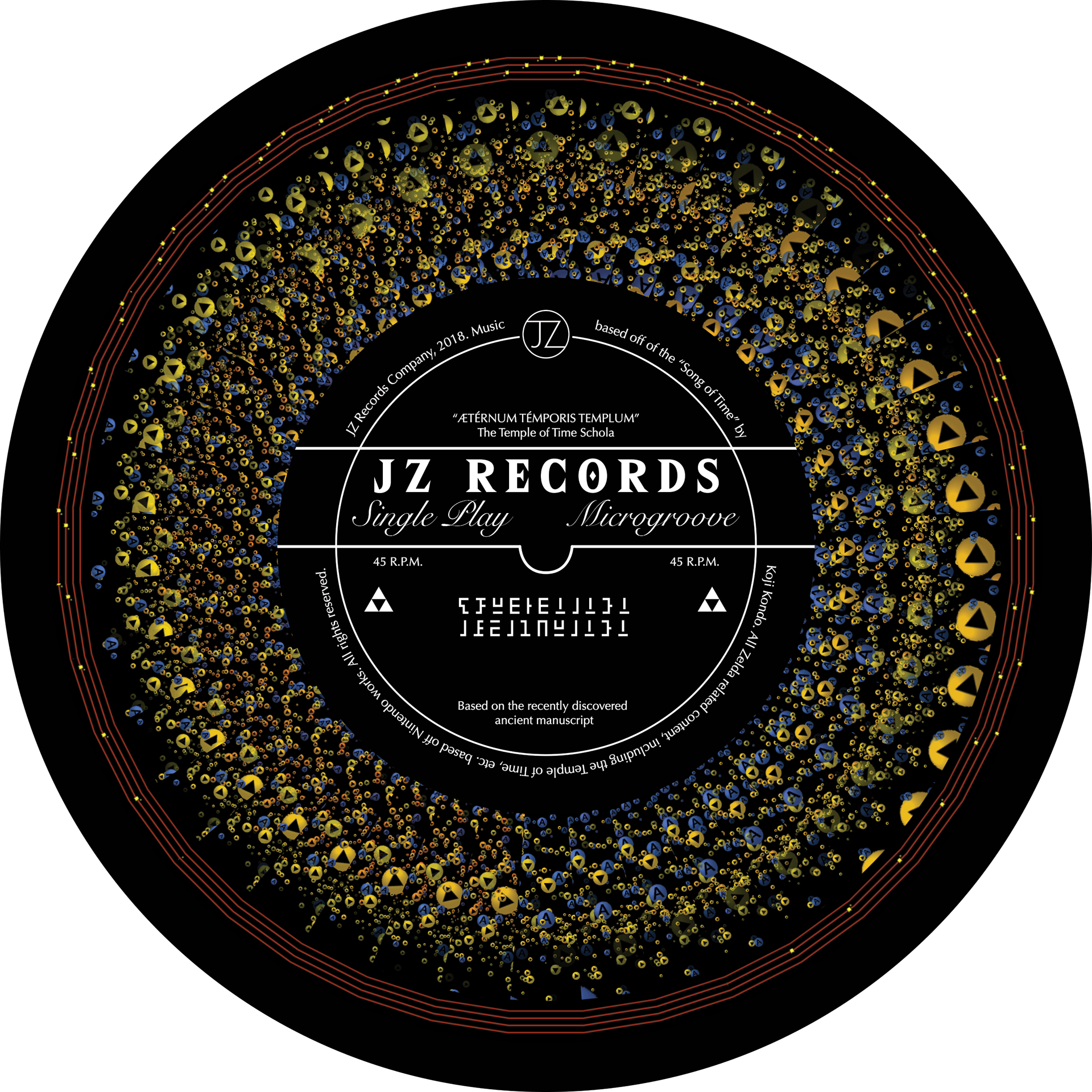
The final record label, surrounded by the phenakistoscope frames.

The label applied to one of the records.
Left: the animation as it would appear under the strobe light (or cell phone camera) on the label. Middle: the final record label, surrounded by the phenakistoscope frames. Right: the label applied to one of the records.
The phenakistoscope in action, filmed under my trusty iPhone SE camera in a dark room.
Designing the Album Artwork
With the label complete, the only thing left to do was design some album artwork for the new single. I wanted something that looked classy, and that communicated both "Faith" and "The Legend of Zelda". In order to do this, I incorporated the iconic Triforce image from the Zelda universe, and juxtaposed it on top of a montage of stained glass I painted a year or two before I began this project.
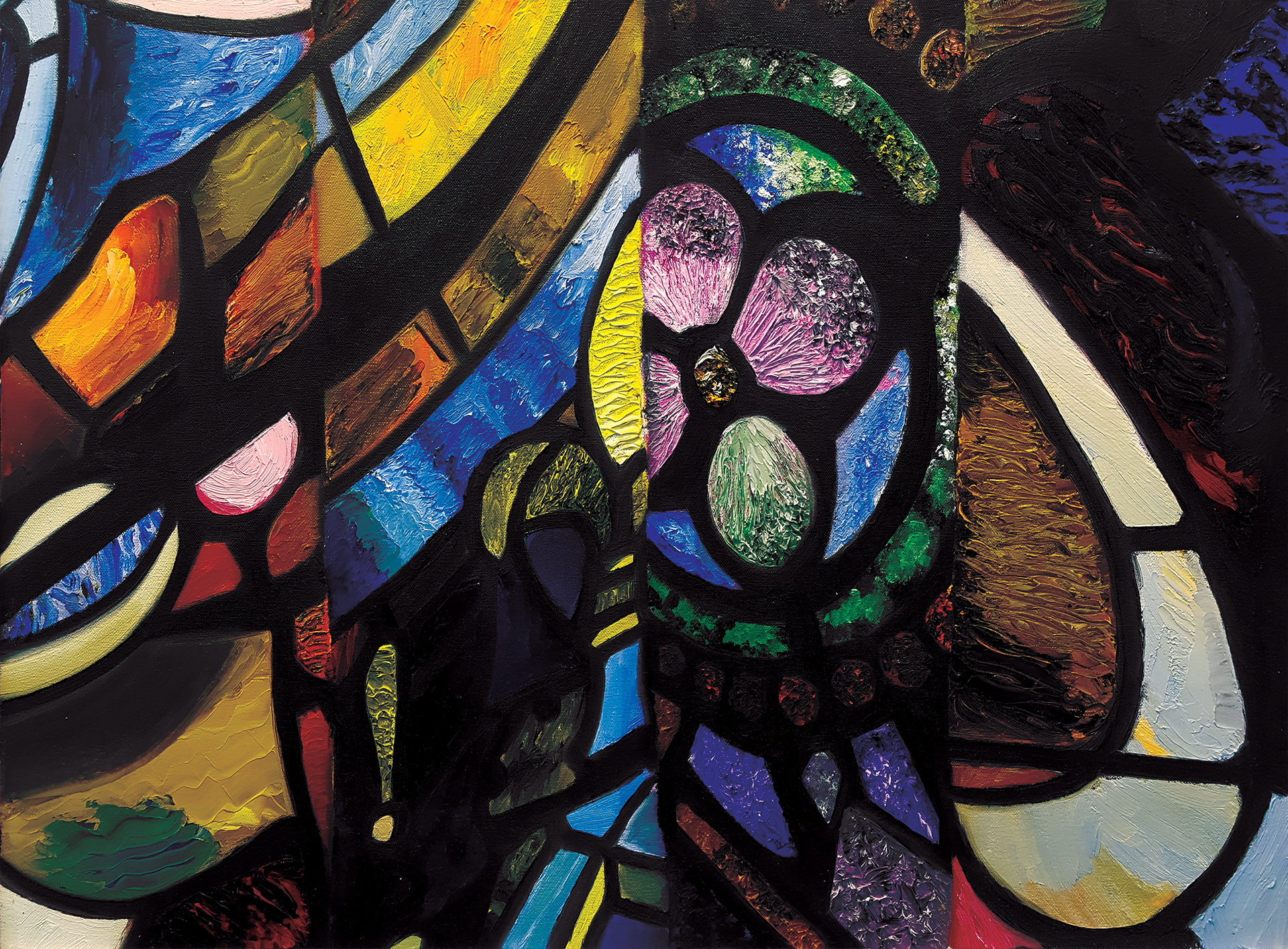
The painting of stained glass I created
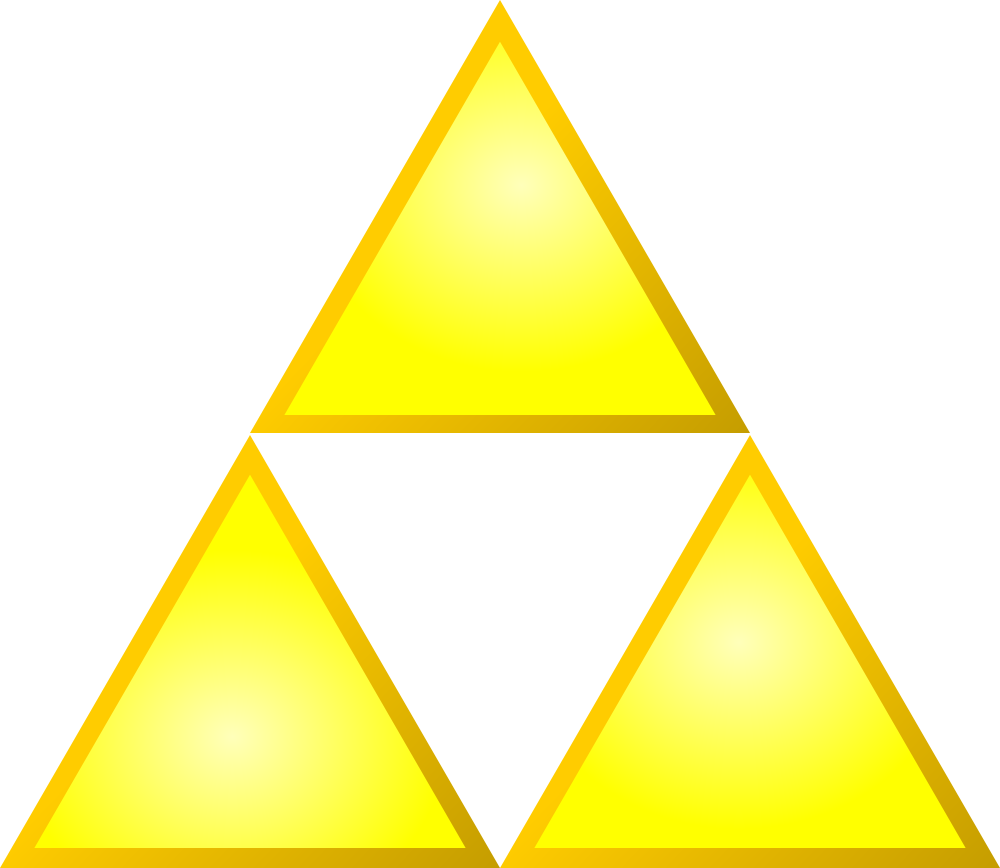
The Triforce, an icon from the Zelda universe
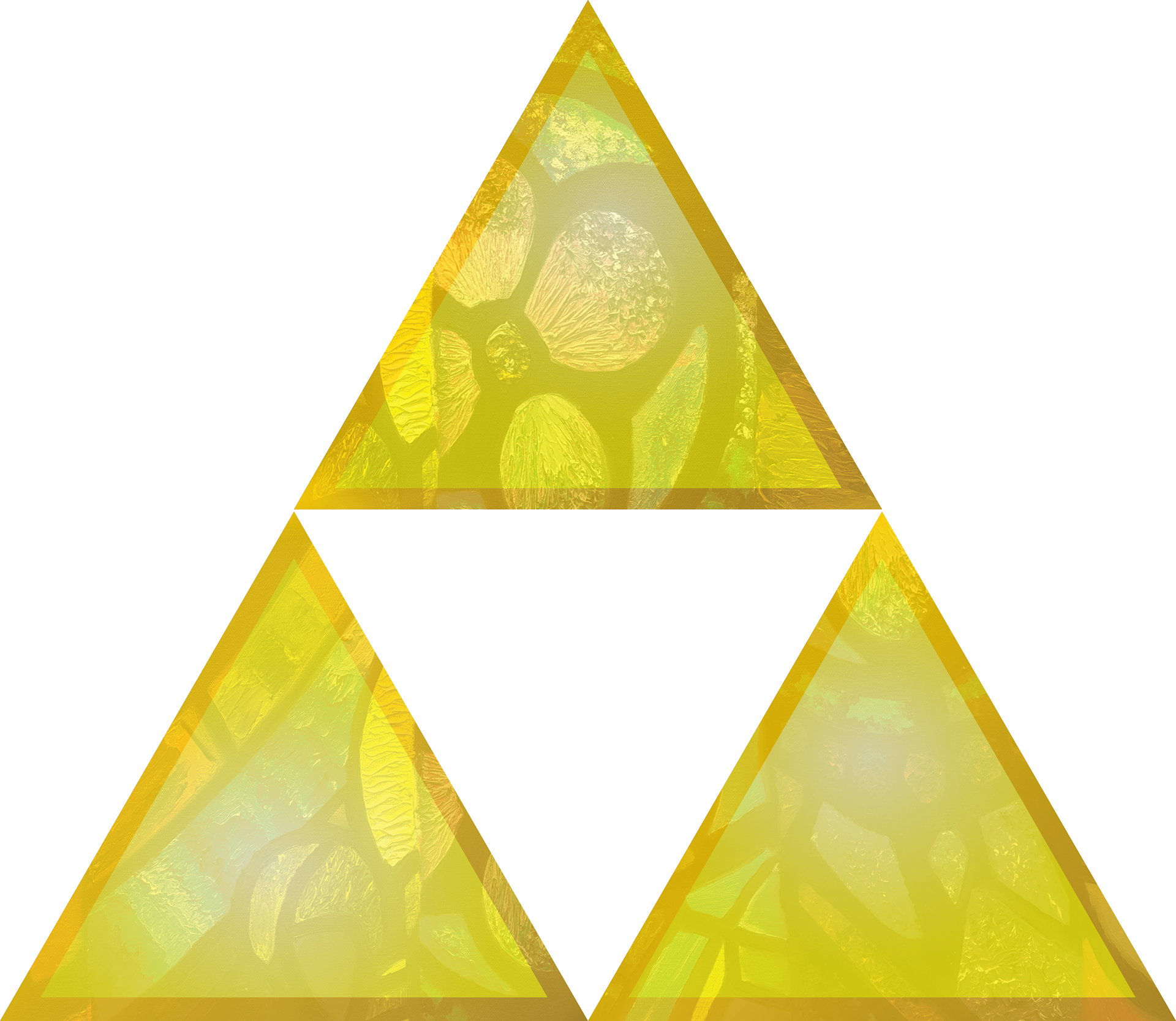
The final product.
Left: the painting of stained glass I created; Middle: the Triforce, an icon from the Zelda universe, that I juxtaposed on top of the stained glass painting. Right: the final product.
I thought it would be sweet for text to appear on the album that made it look as if it actually came from the The Legend of Zelda universe, and so I decided to include the fictional language of the world, Hylian, in its artwork. Now, this language is, in reality, just Japanese with an alternative alphabet. So I consulted a native-Japanese speaker to translate the terms I needed into Japanese, and followed a syllabary guide to match each Japanese character with the respective Hylian character.
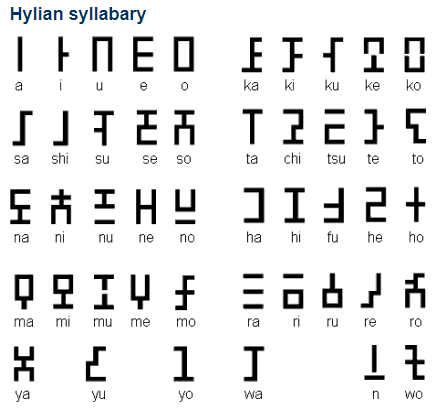
The syllabary guide I followed for the Hylian text appearing on the album artwork.
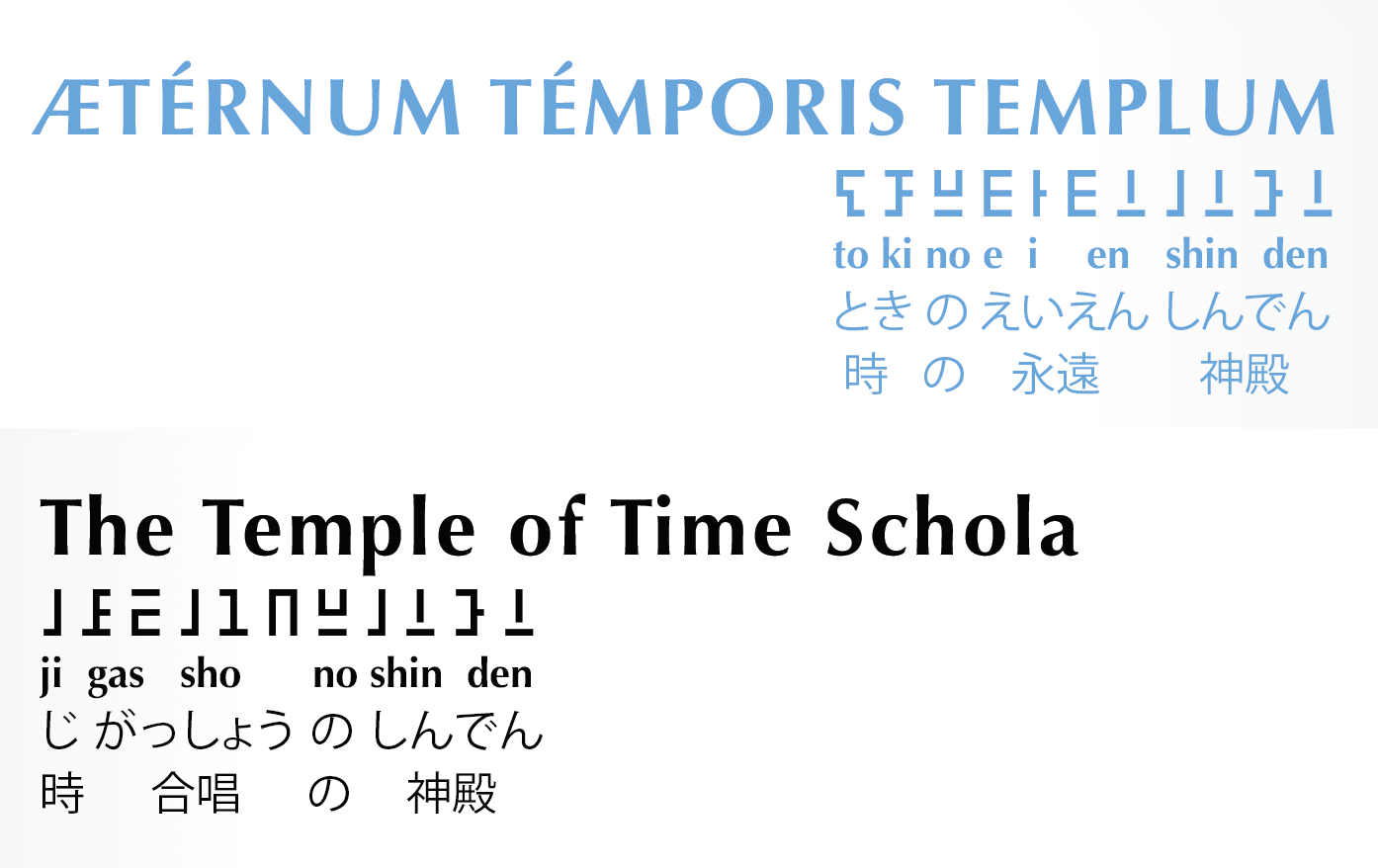
Left: the syllabary guide I followed. Right: the Hylian text that appears on the album artwork, with the Latin/English on the top, the Hylian following, and the Japanese matched up in Romanji, Kana, and Katakana.
Finally, for the back of the album, I wrote up a fake history of the chant, in which I fused the history of Gregorian Chant from our universe with the mythos of the Zelda universe into one, grand medley. In this I poured my love for the mysticism that surrounds Gregorian Chant, and that had had such an impact on my walk with the Lord.
I put it all together, making two standard white editions, and a "special" black and yellow edition, and, voila!
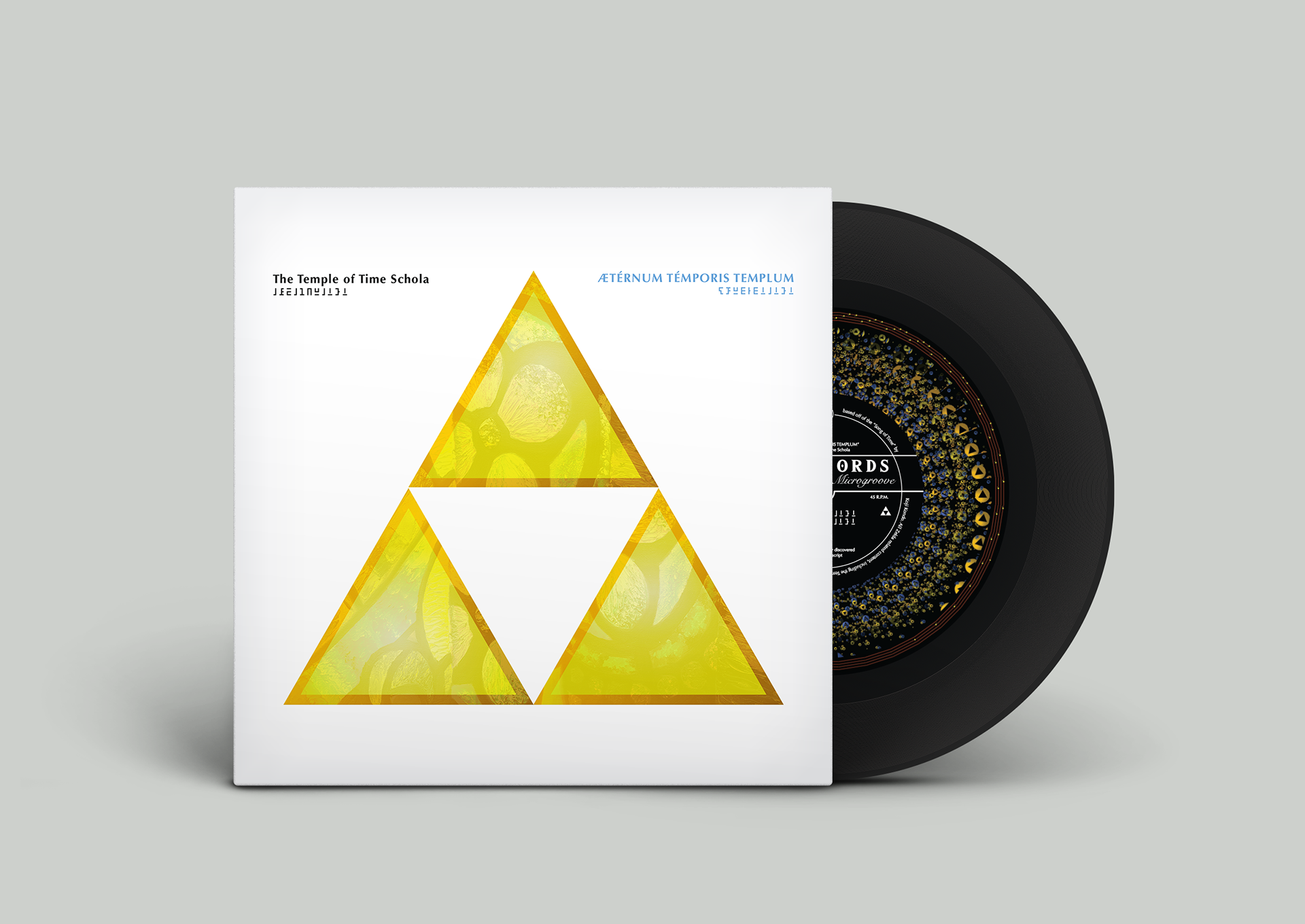
Standard Edition: front
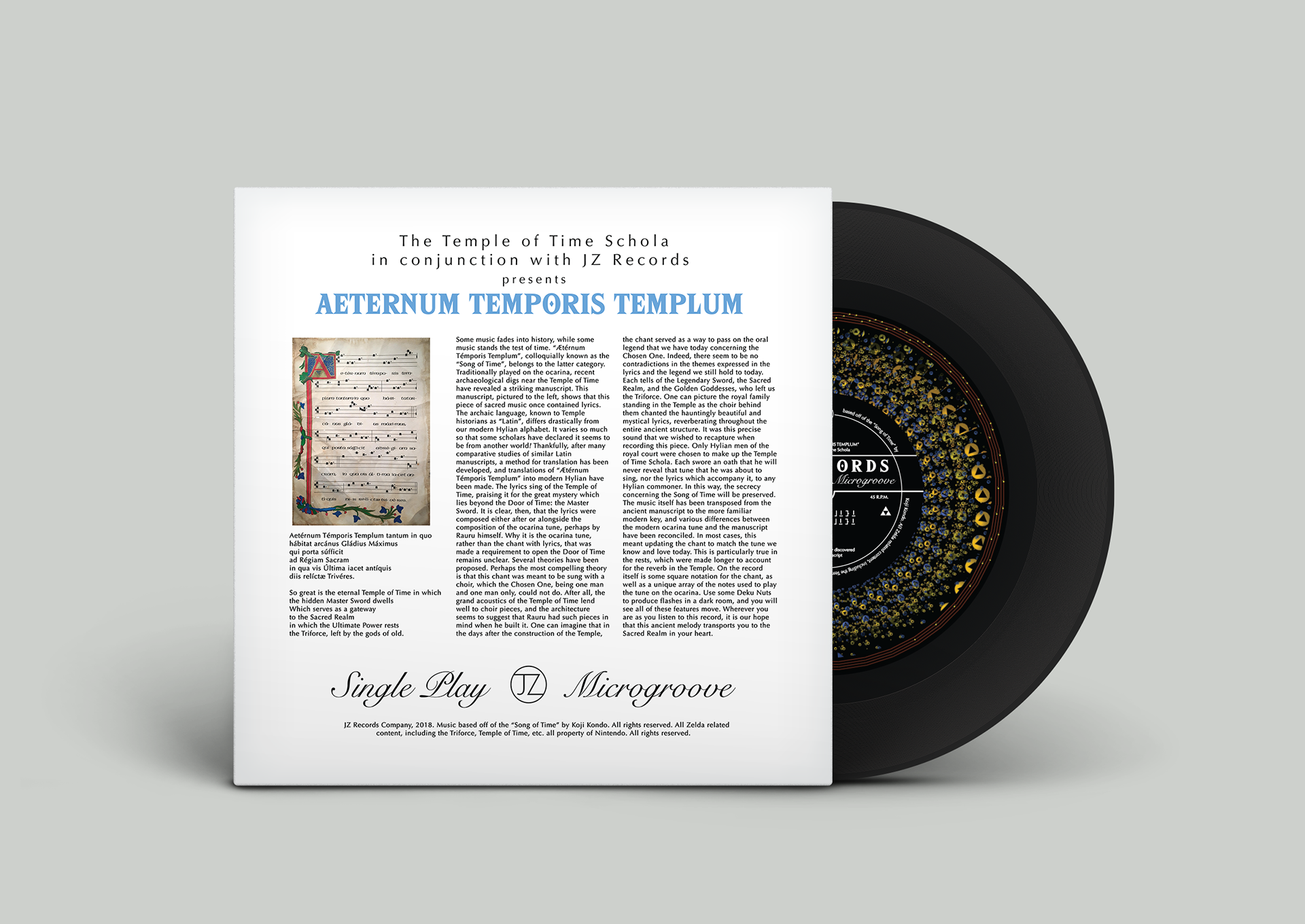
Standard Edition: back
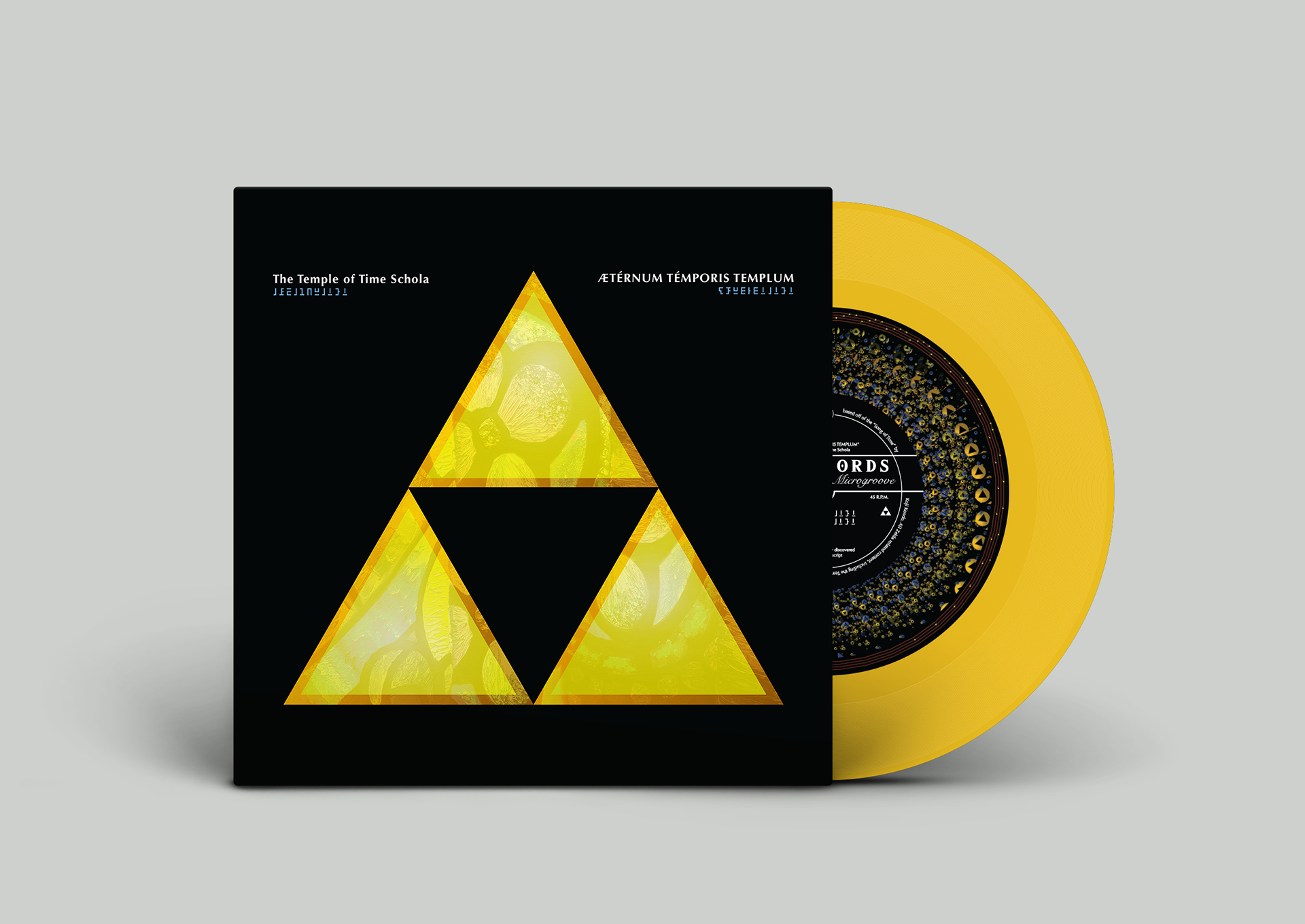
Special Edition: front
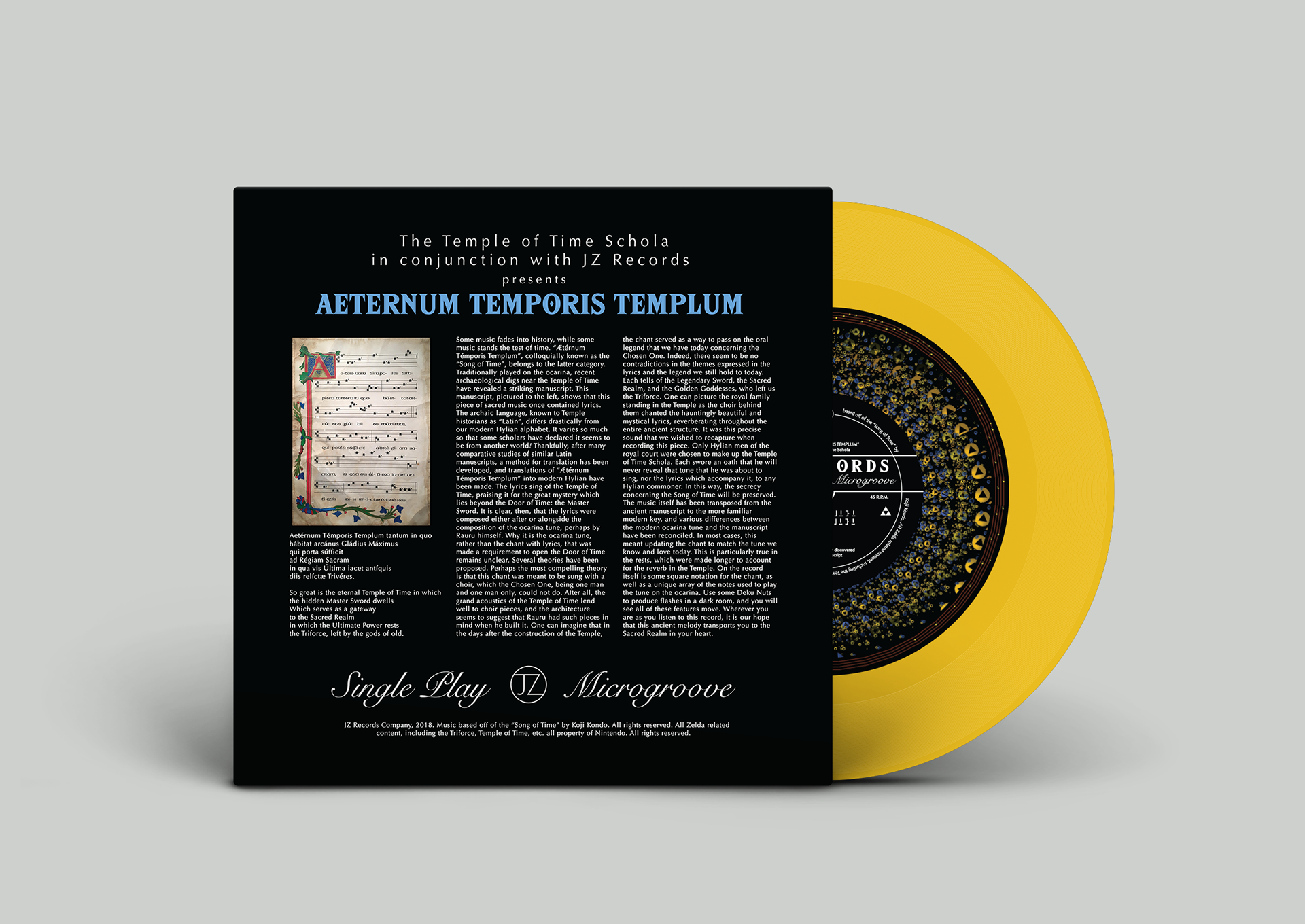
Special Edition: back
It was finished! The album artwork was printed on glossy photopaper, and subsequently adhered to poster board. From there, I carefully had to hand cut creases at the fold points, and glue it all together to form the record boxes. The final product was quite striking.

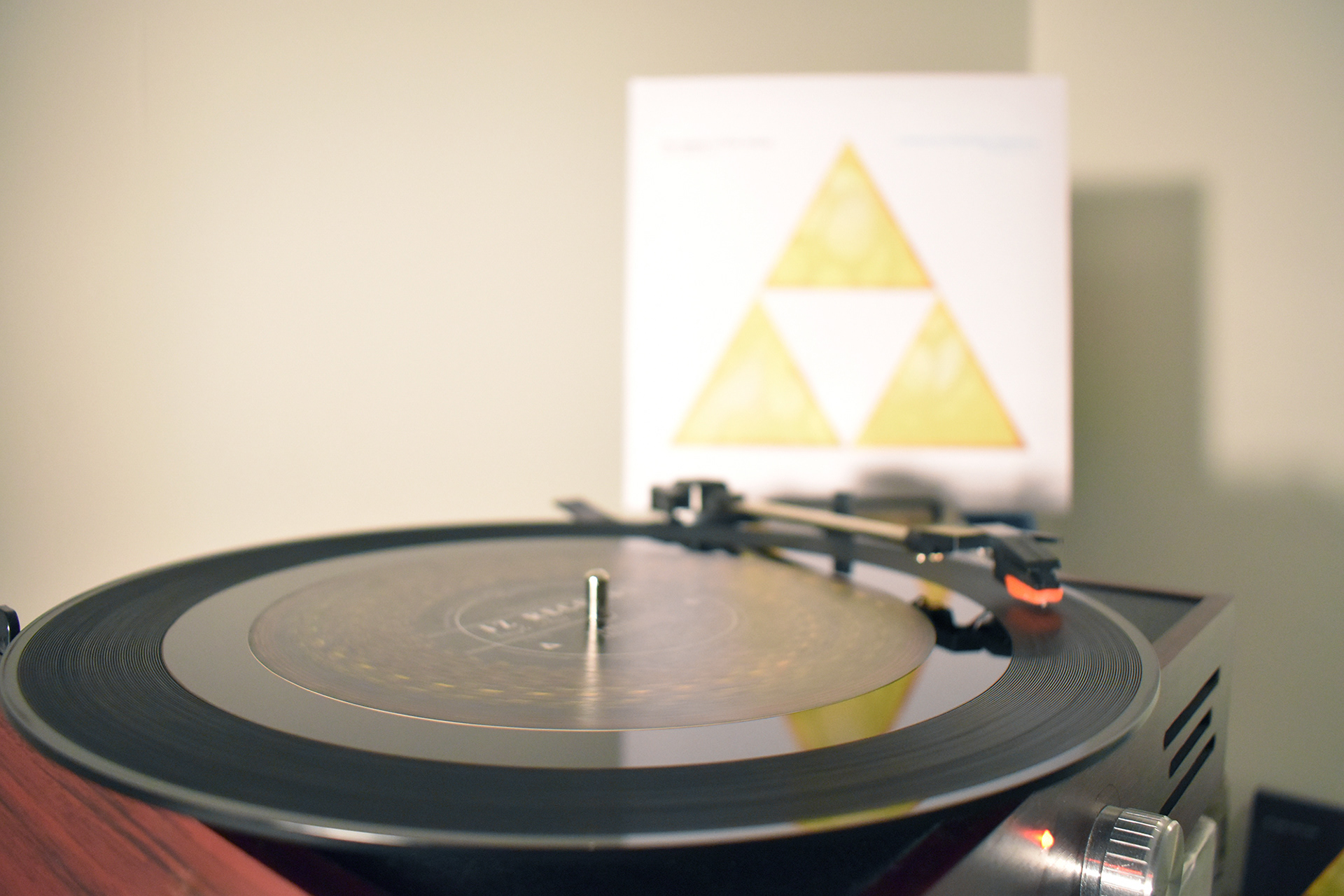
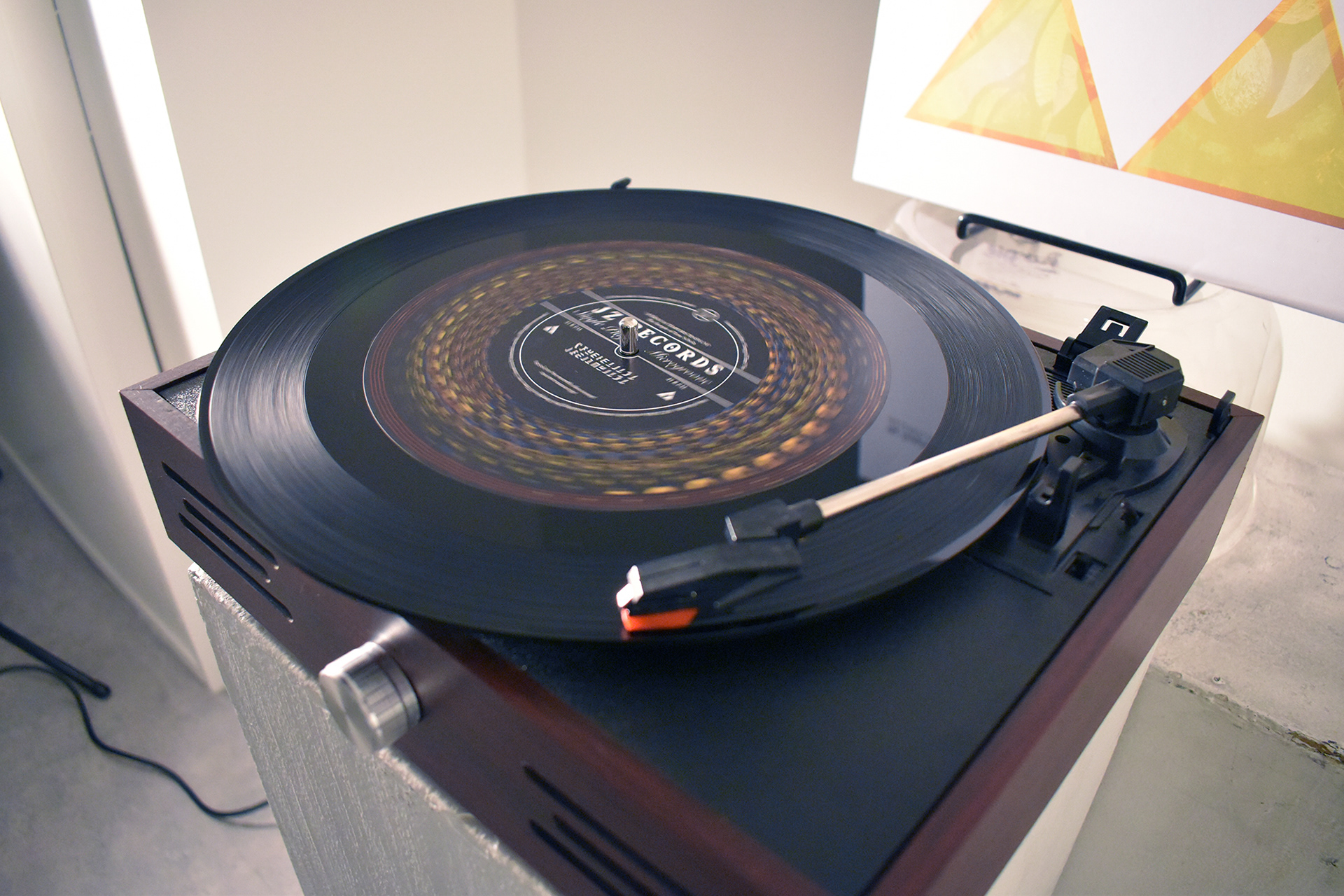
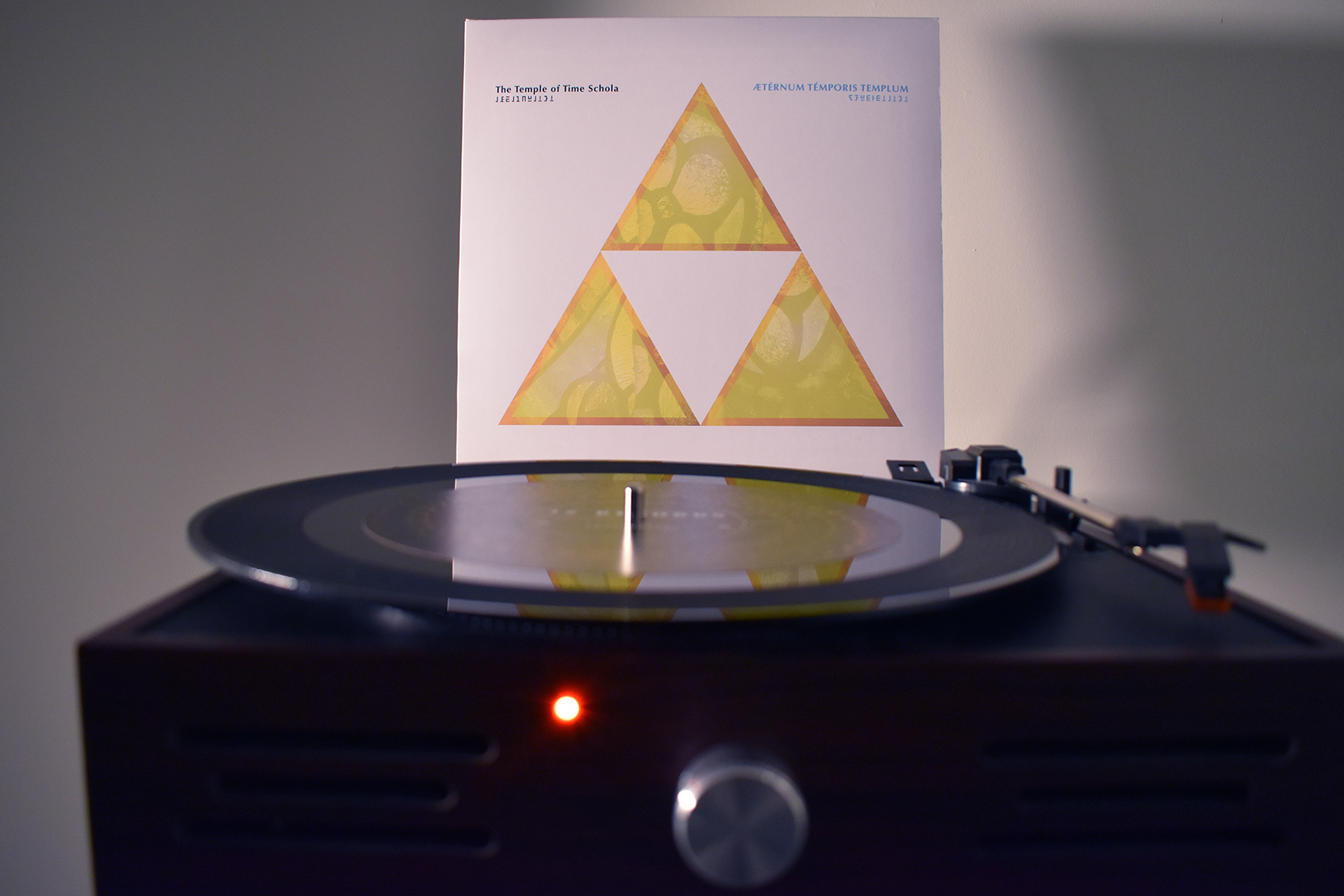
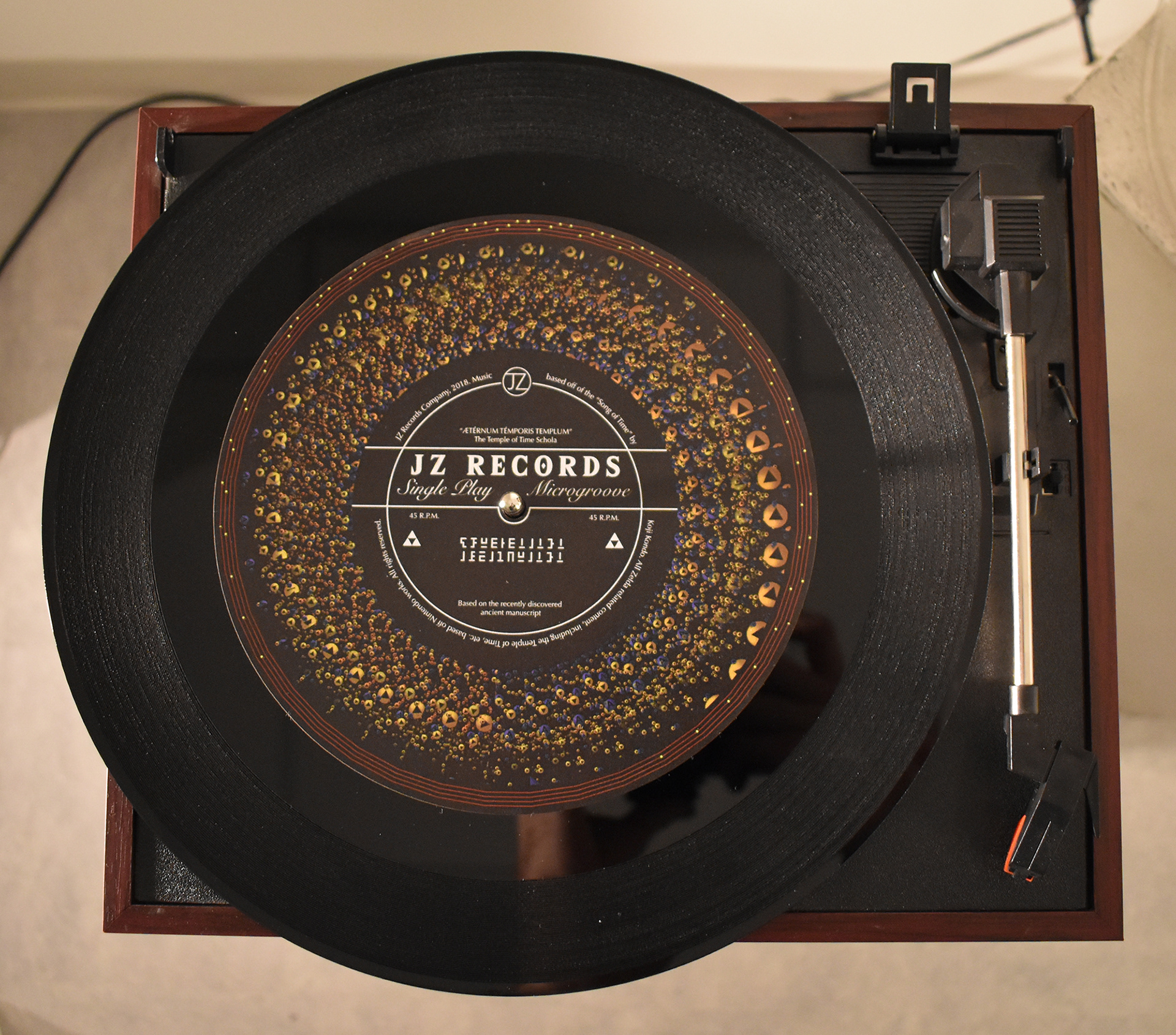
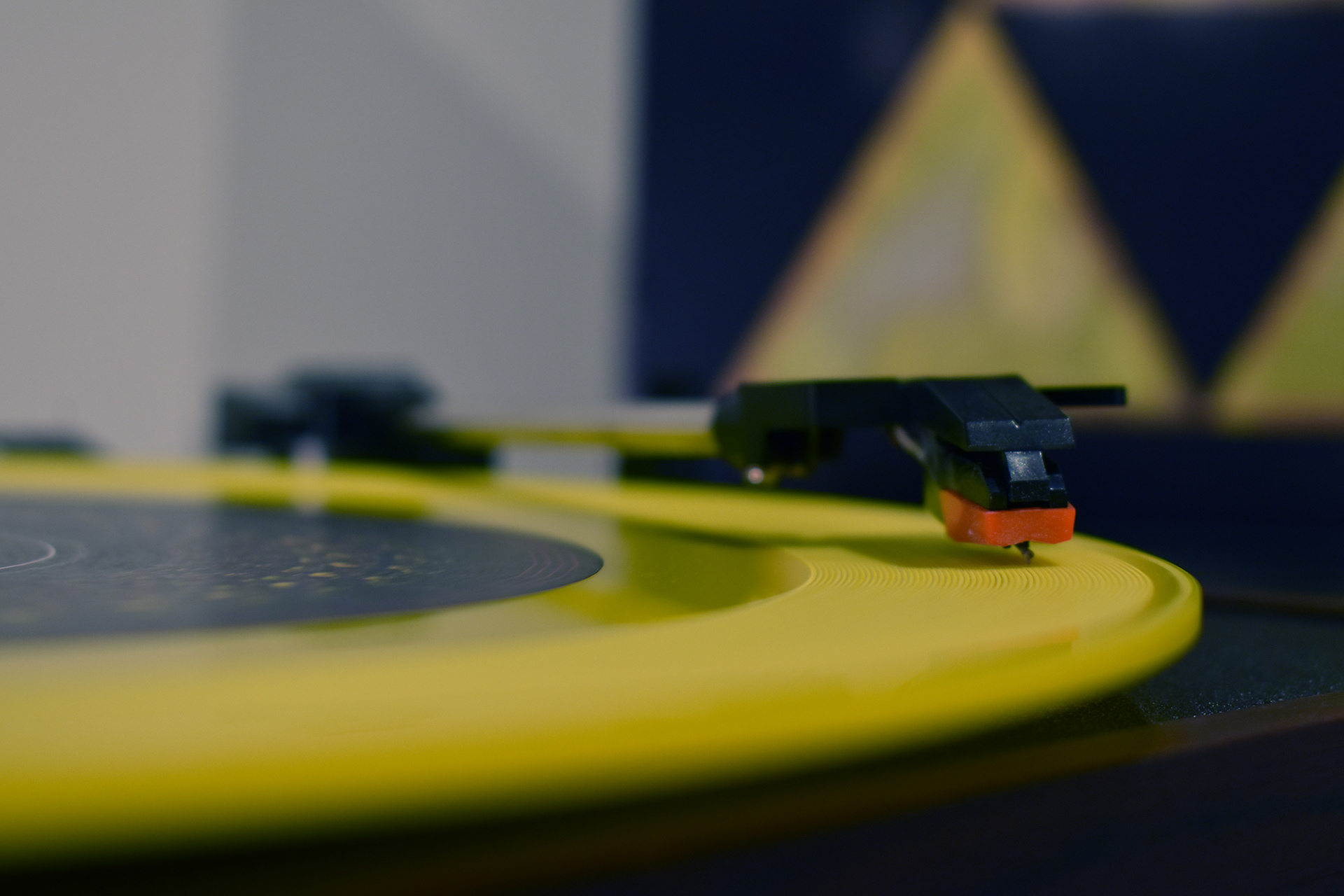
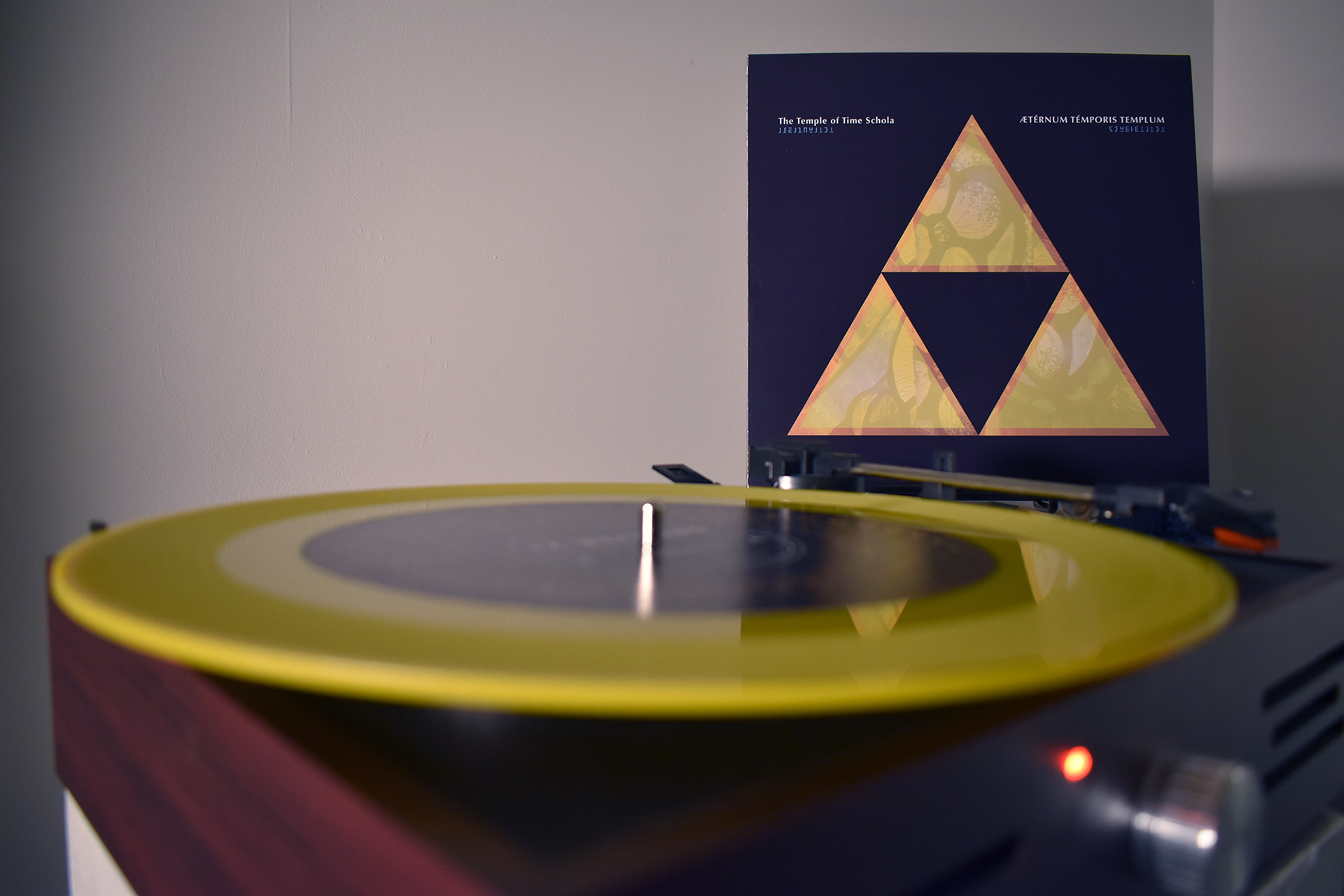
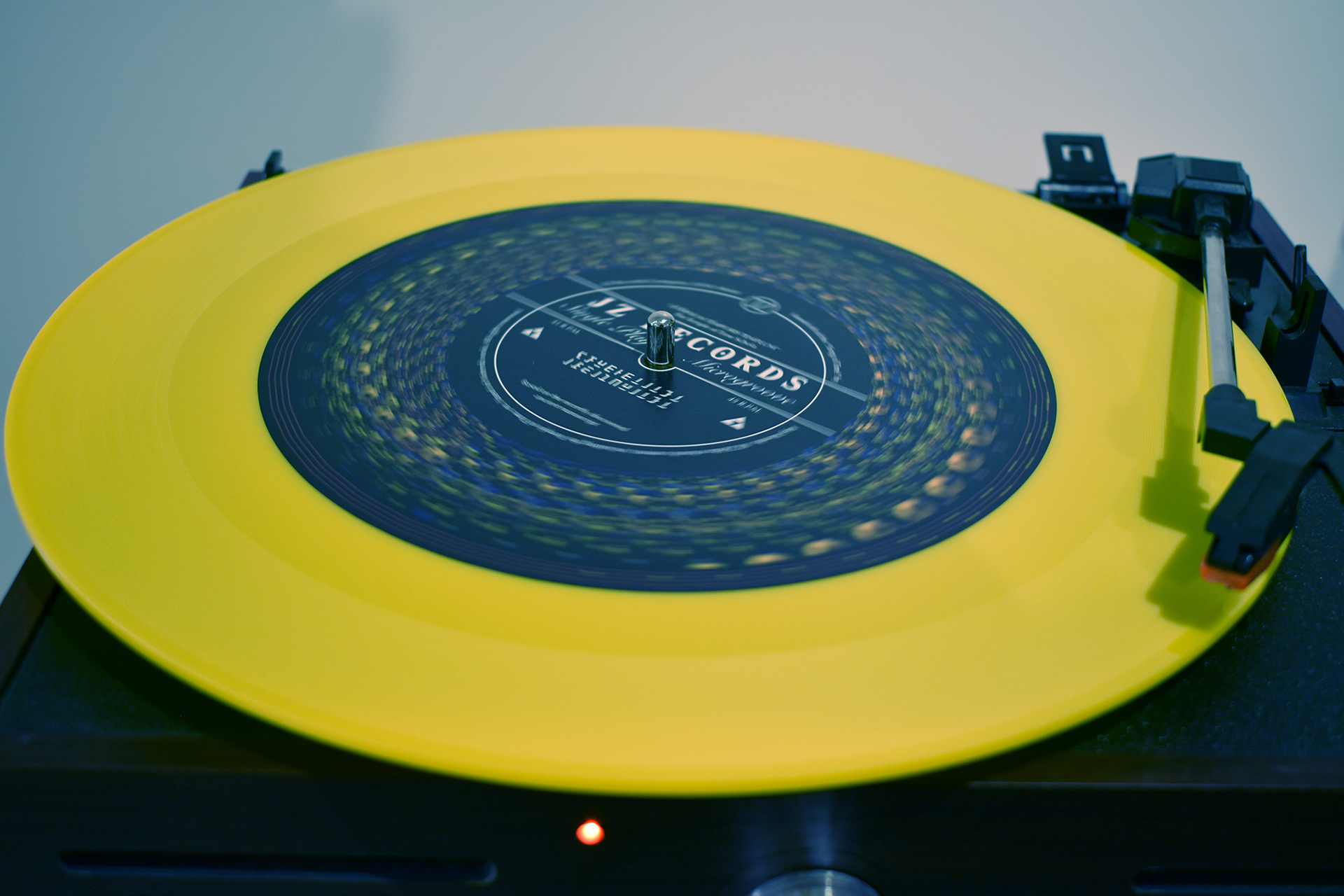
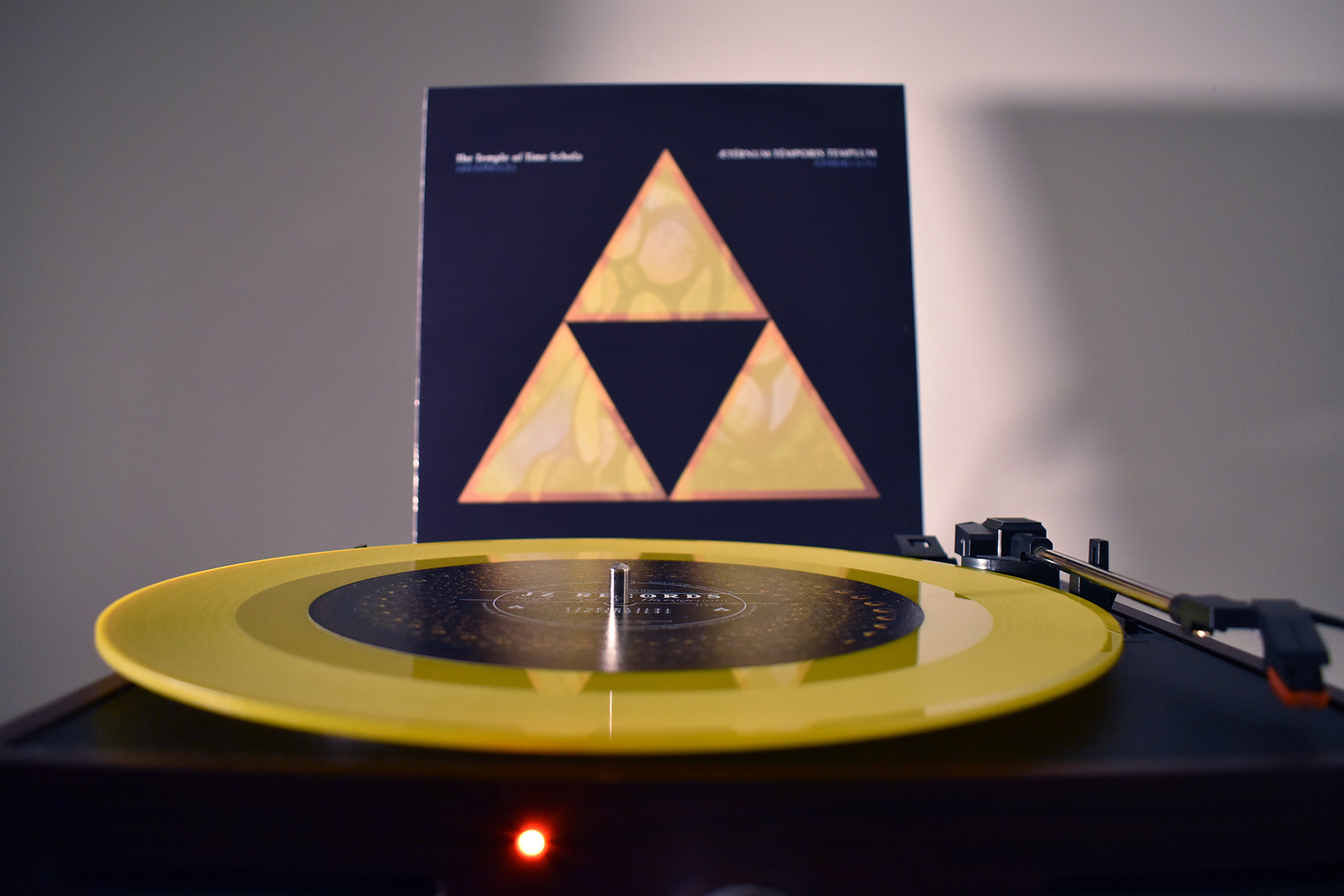
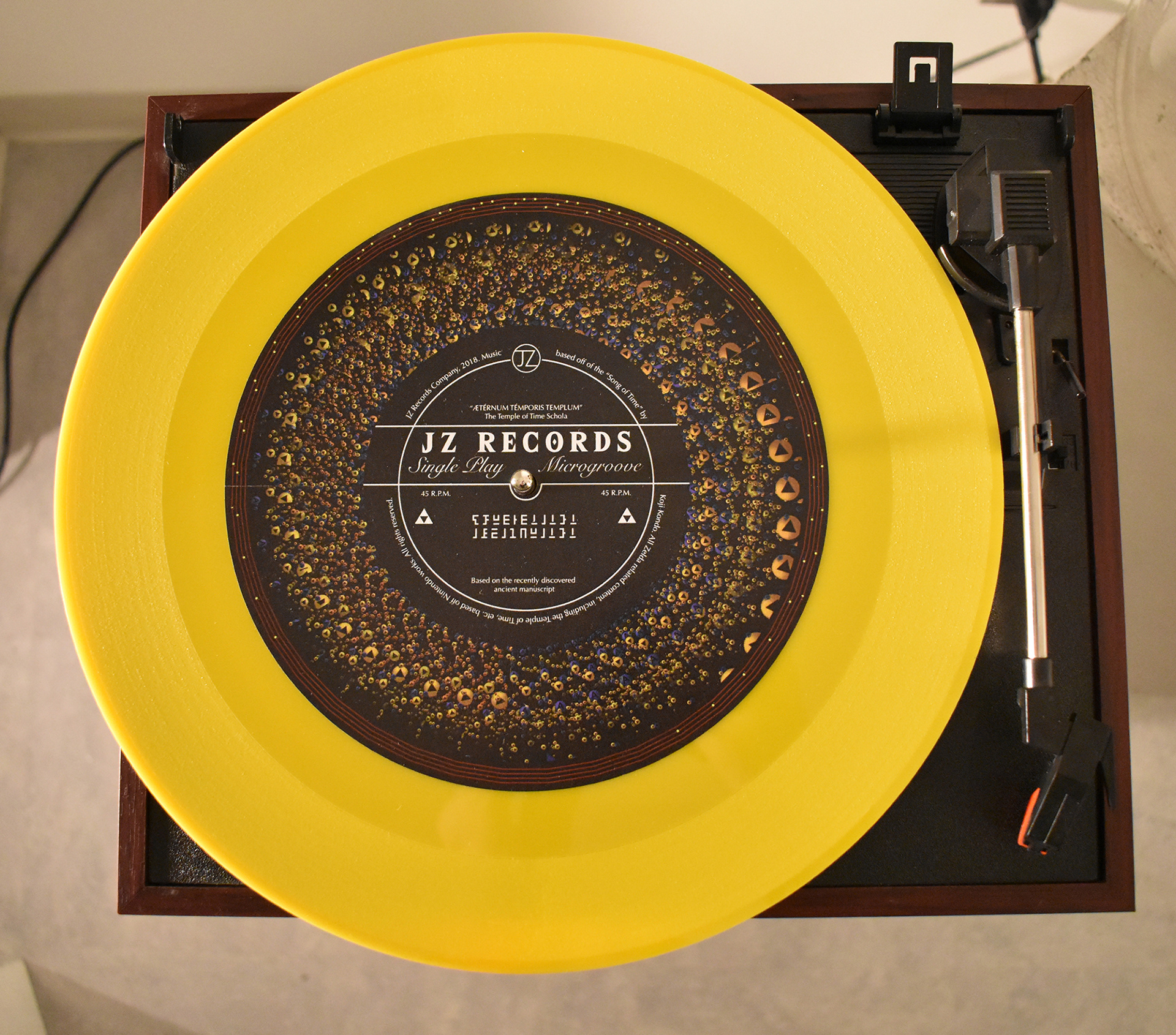
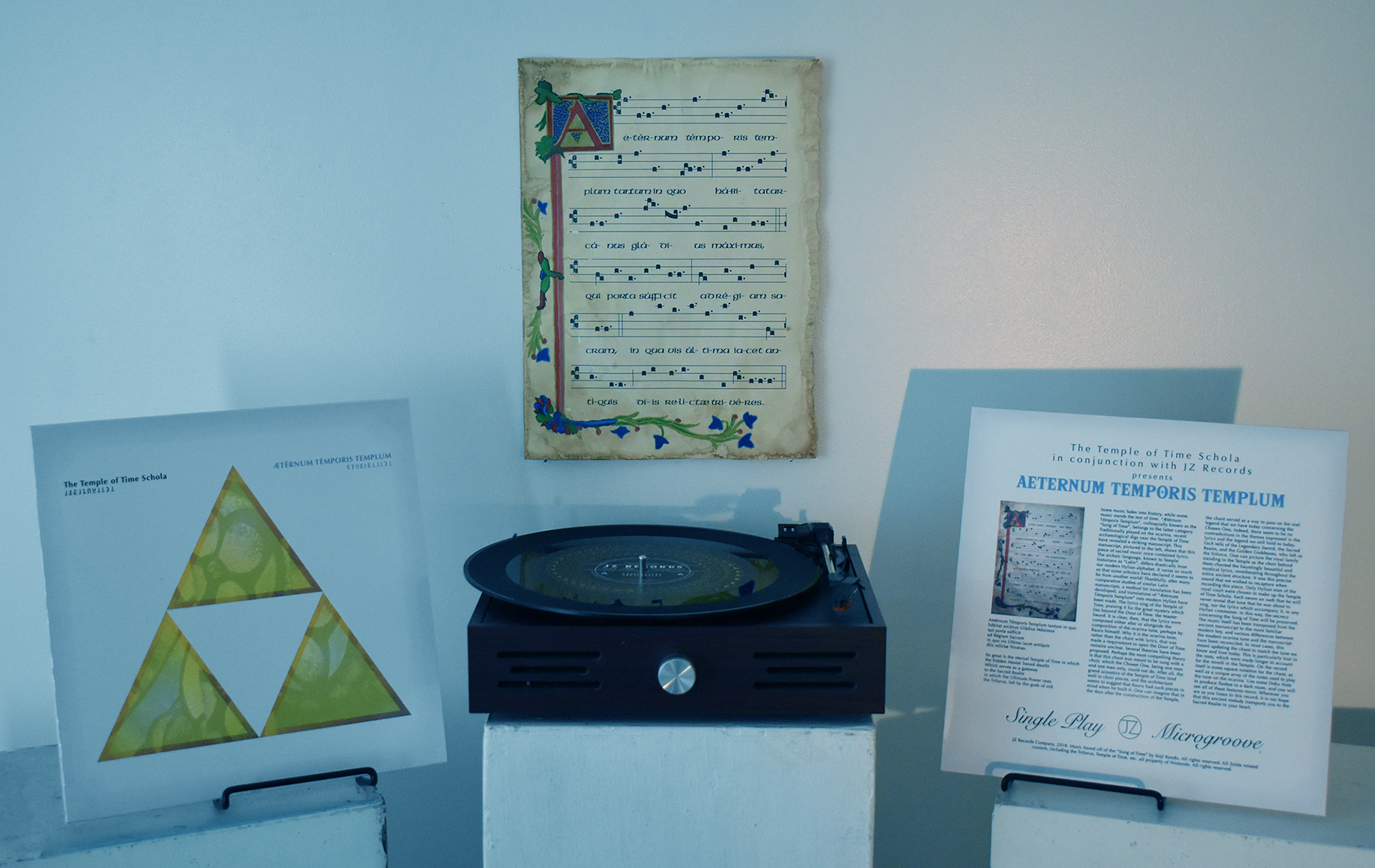
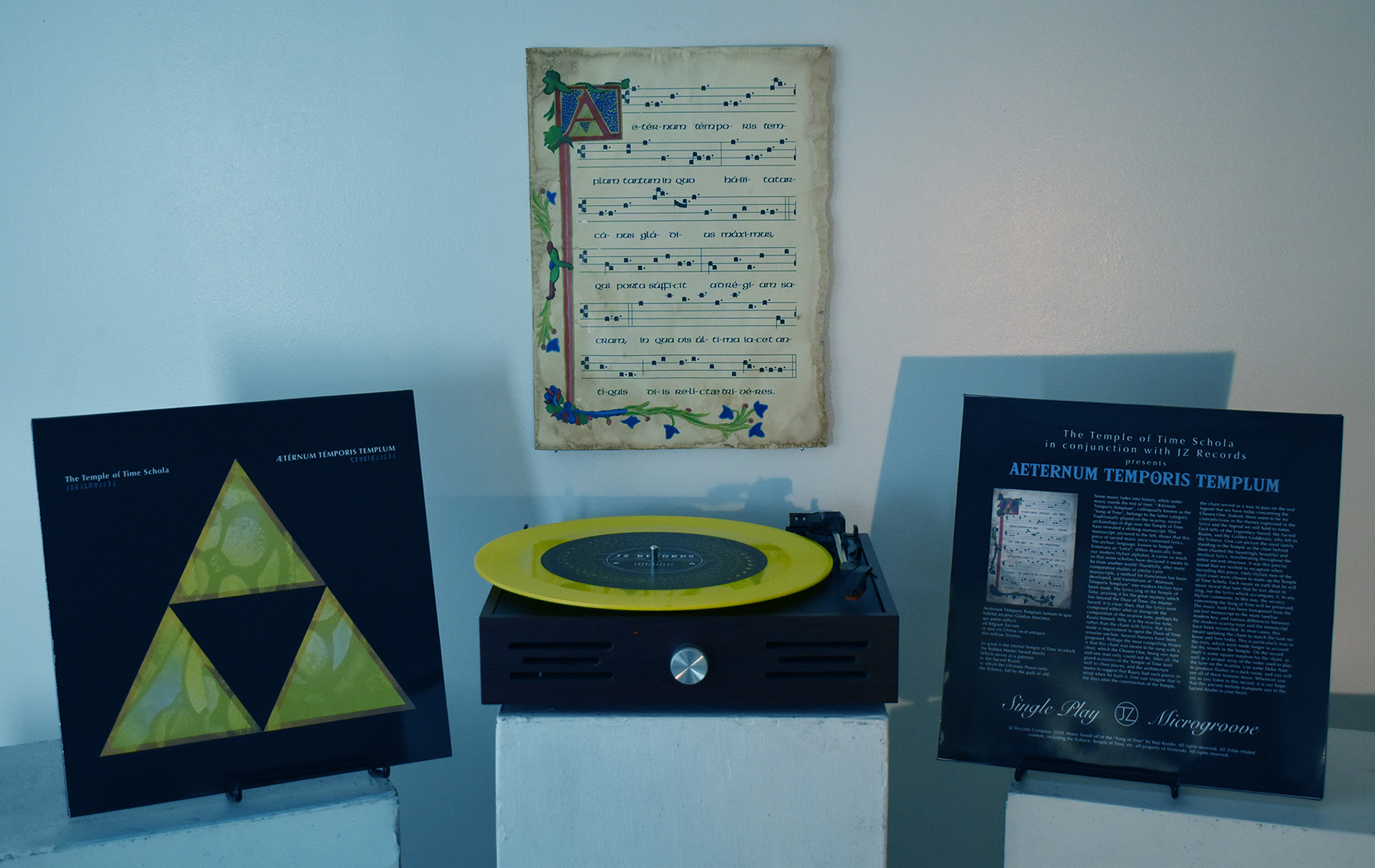
"If through delight in the beauty of these things men assumed them to be gods, let them know how much better than these is their Lord, for the author of beauty created them. And if men were amazed at their power and working, let them perceive from them how much more powerful is he who formed them. For from the greatness and beauty of created things comes a corresponding perception of their Creator."
~ Widsom xiii. 3-5
When I had first encountered "The Song of Time" as a teenager, I was struck by its beauty. Indeed, within the data bits that fabricated that wonderful synth choir lied the power to transfer my mind more fully into the universe of The Legend of Zelda.
When I discovered Gregorian Chant as a young adult, I found the true purpose of such beautiful music: to move the body and soul to, in the words of Saint Augustine, "Beauty ever ancient, ever new"; that is, to God. As a work of created beauty, this project does the same, and finds its ultimate purpose in doing so. It matters not that the lyrics sing of fairy-story gods who created a fairy-story world and a fairy-story Triforce. I do not contend that this contains the lyrical quality of a true Gregorian Chant, endowed with pieces of Sacred Scripture, but merely that it points to that lyrical quality with its newly composed Latin lyrics, and, therefore, in an indirect way, points to the God of the greatest fairy-story that was ever told, for it is the only fairy-story that is true: the Gospel of Jesus Christ.
And so, as I put the finishing touches on my magnum opus' portfolio entry, I pose the question to you, dear reader: how will you let beauty move you?
Thank you for reading, and God bless.
Of potential further interest:
Other popular media influenced by Gregorian Chant:

